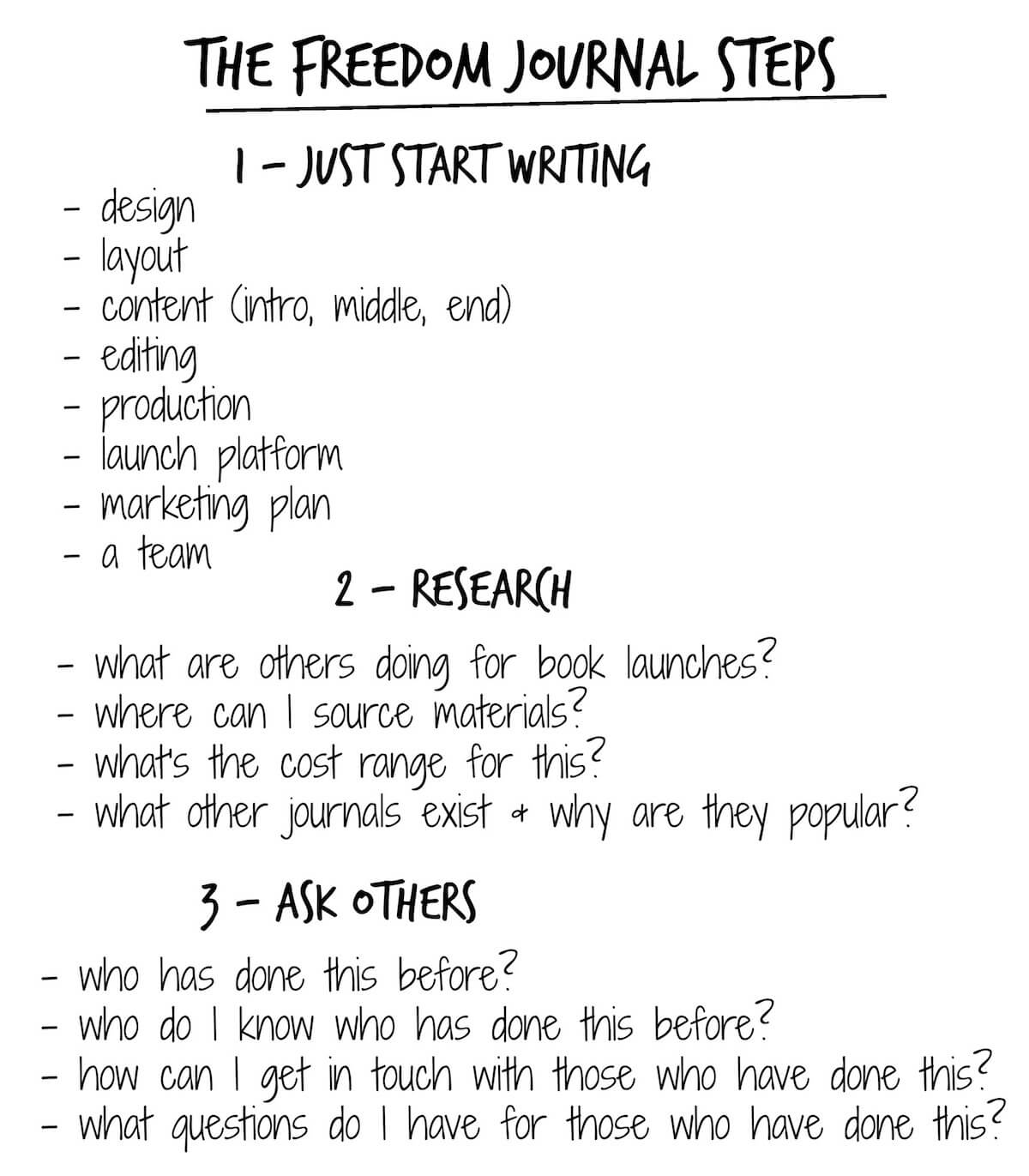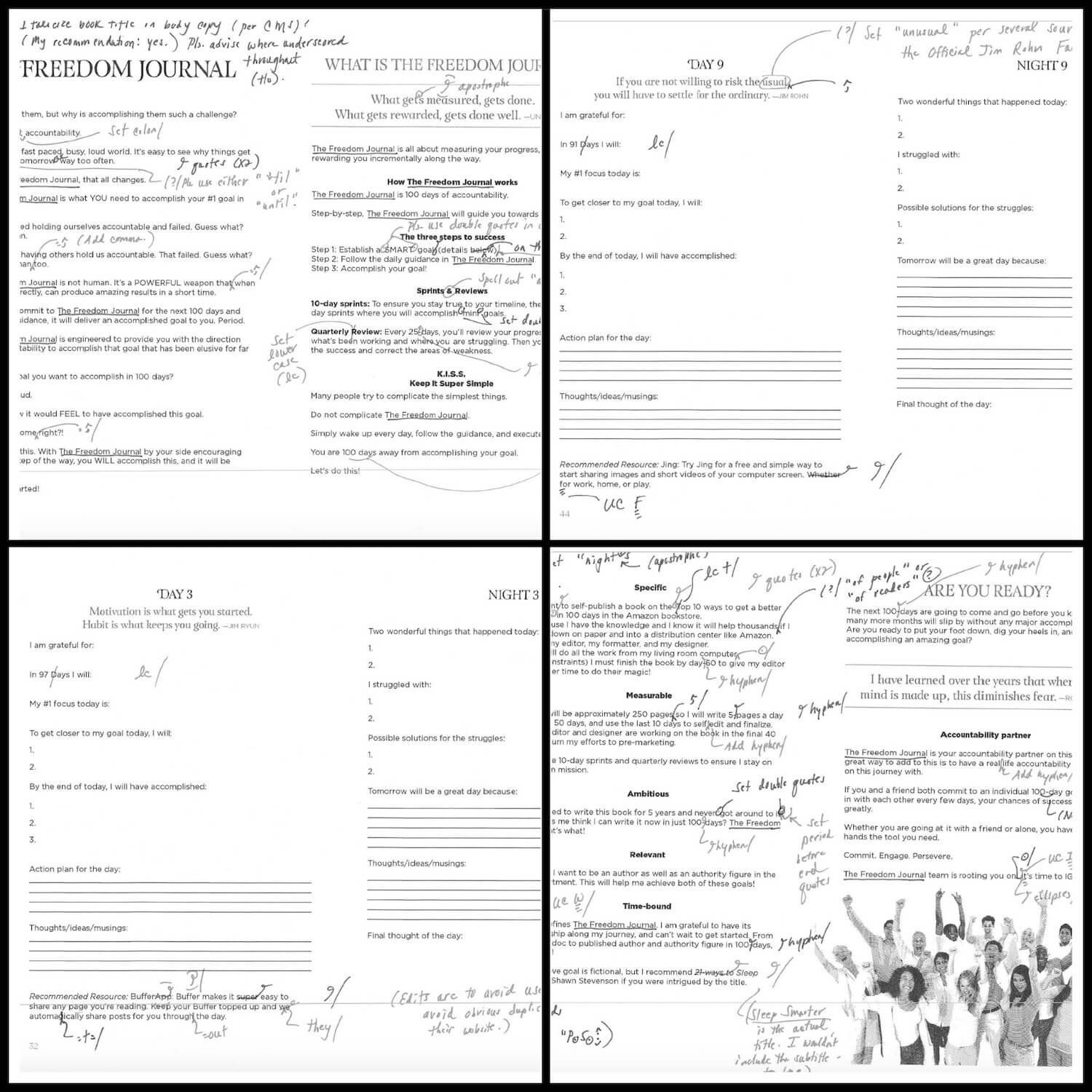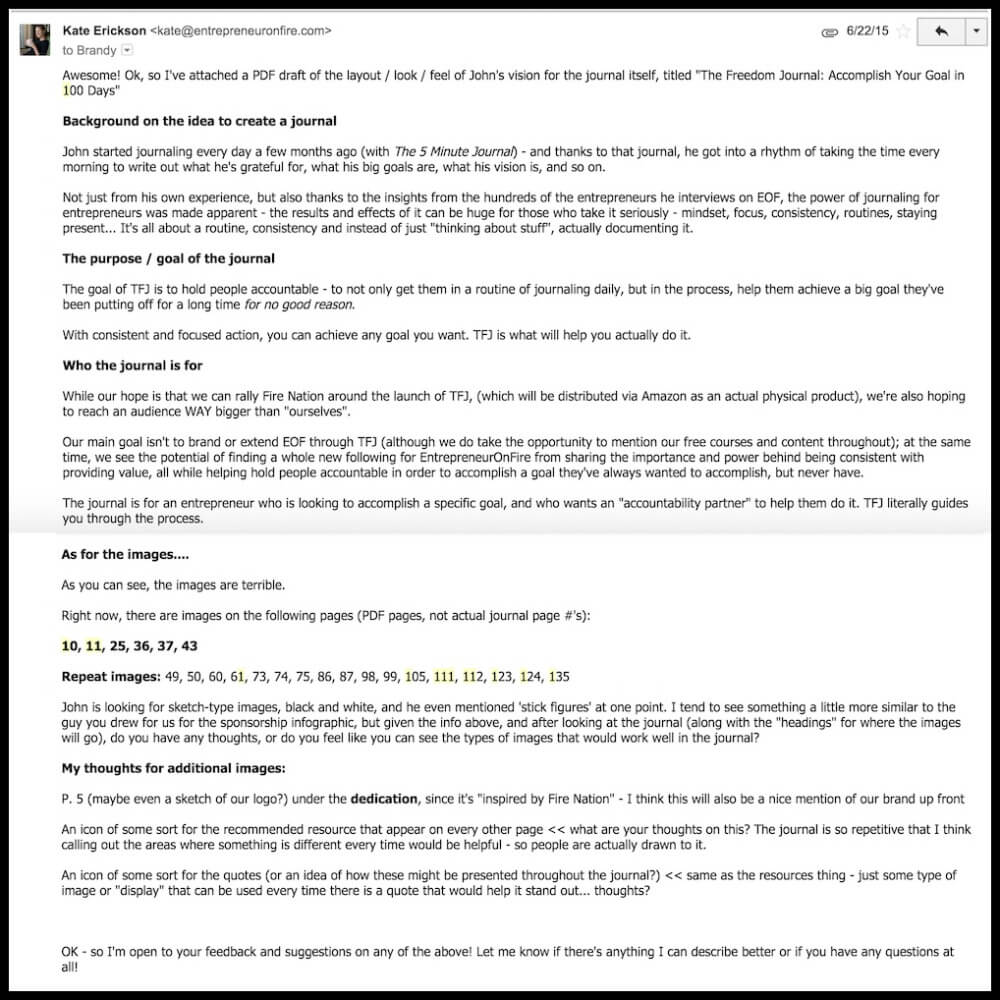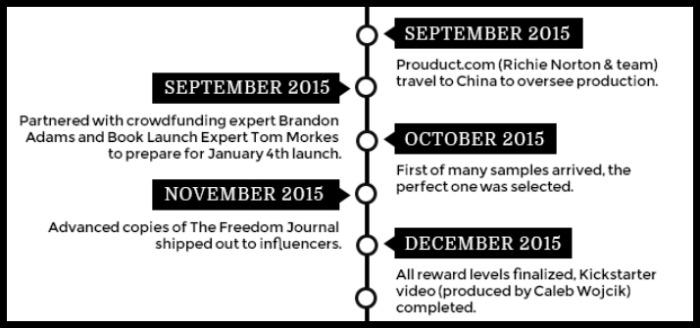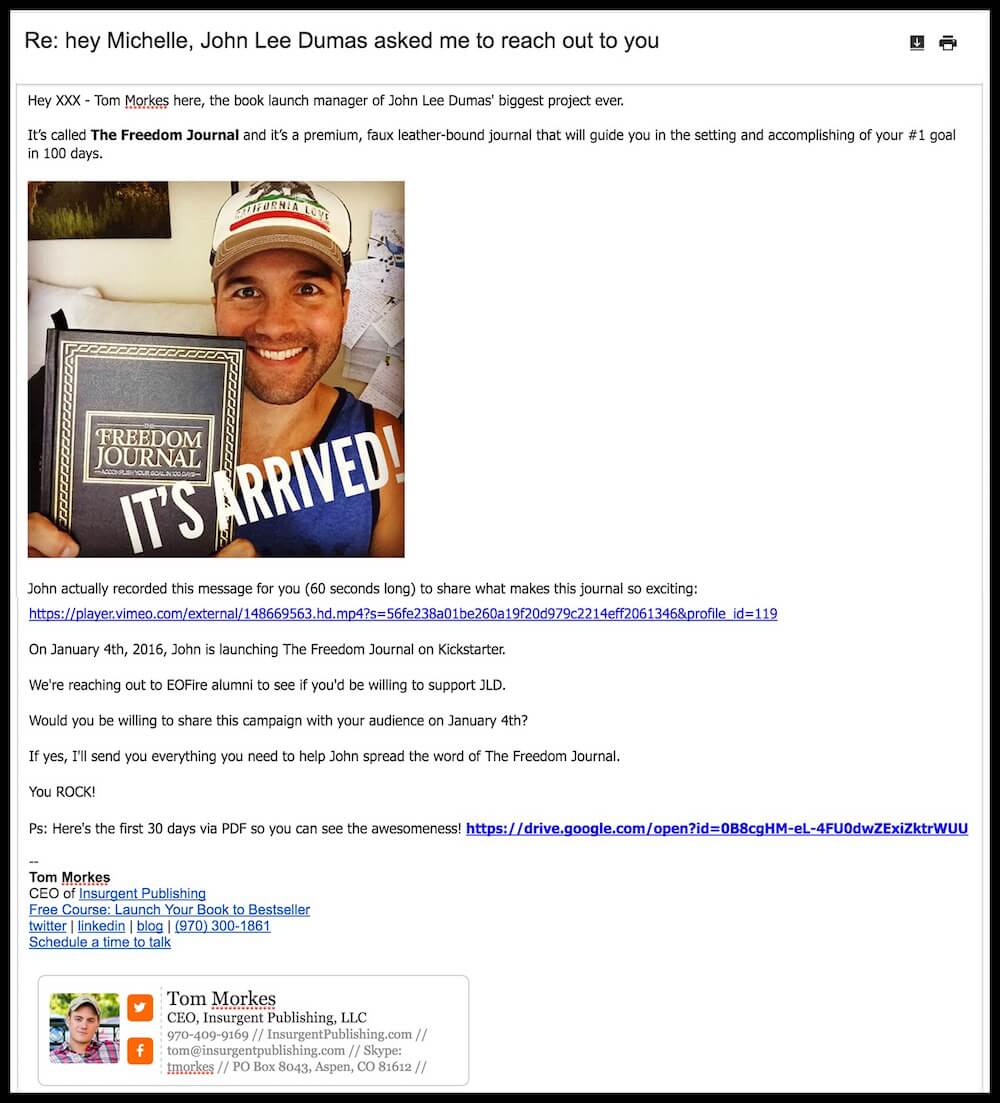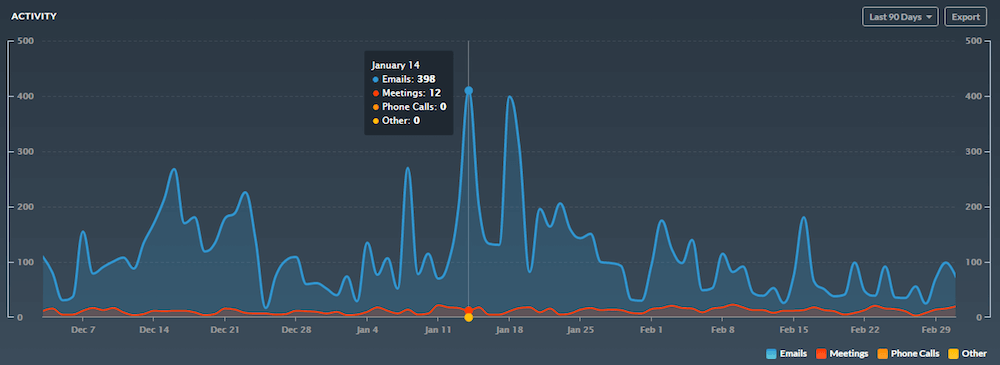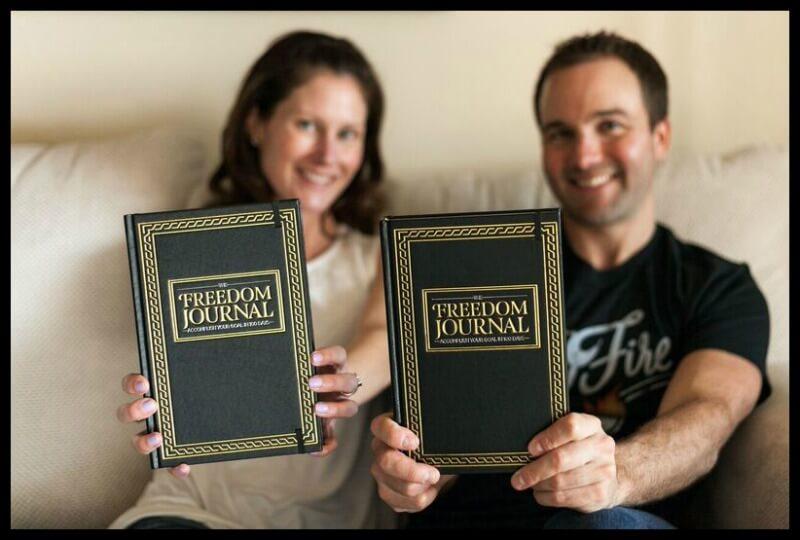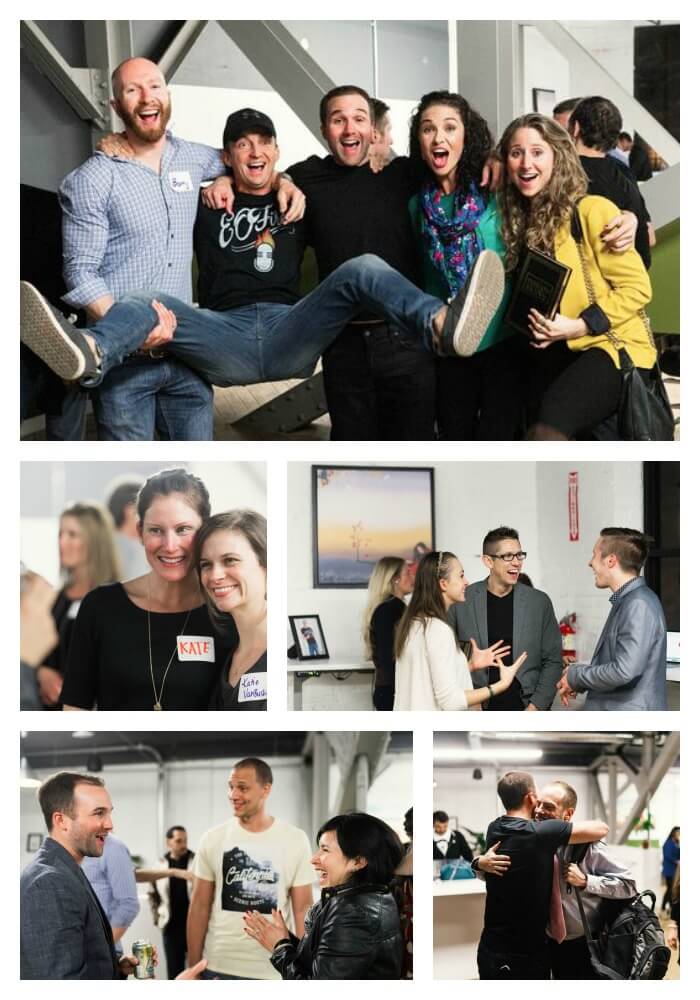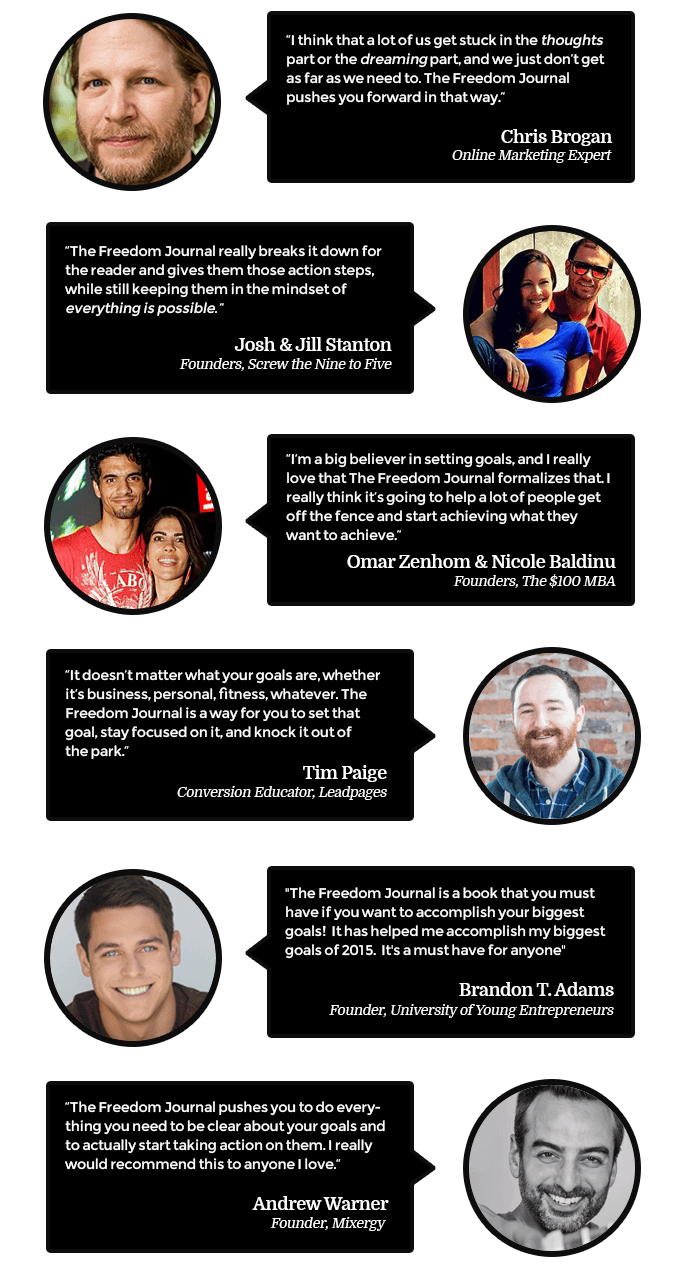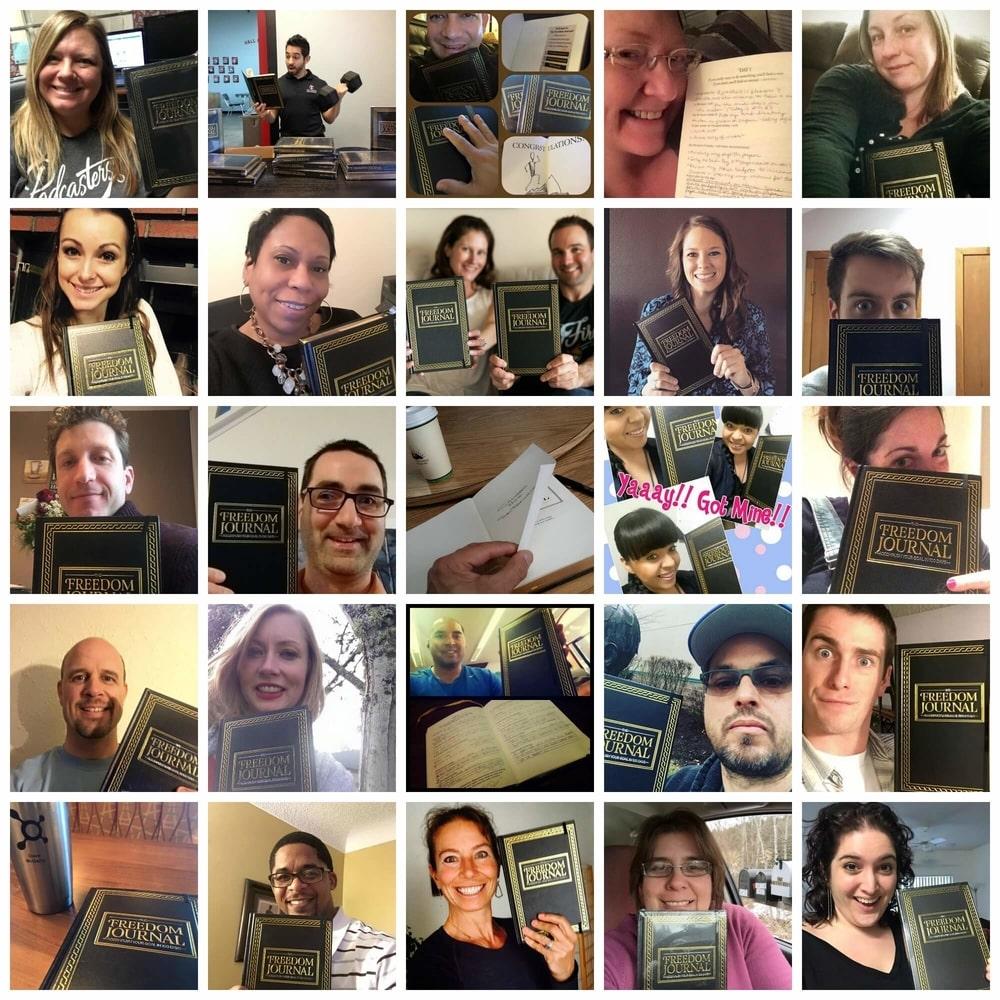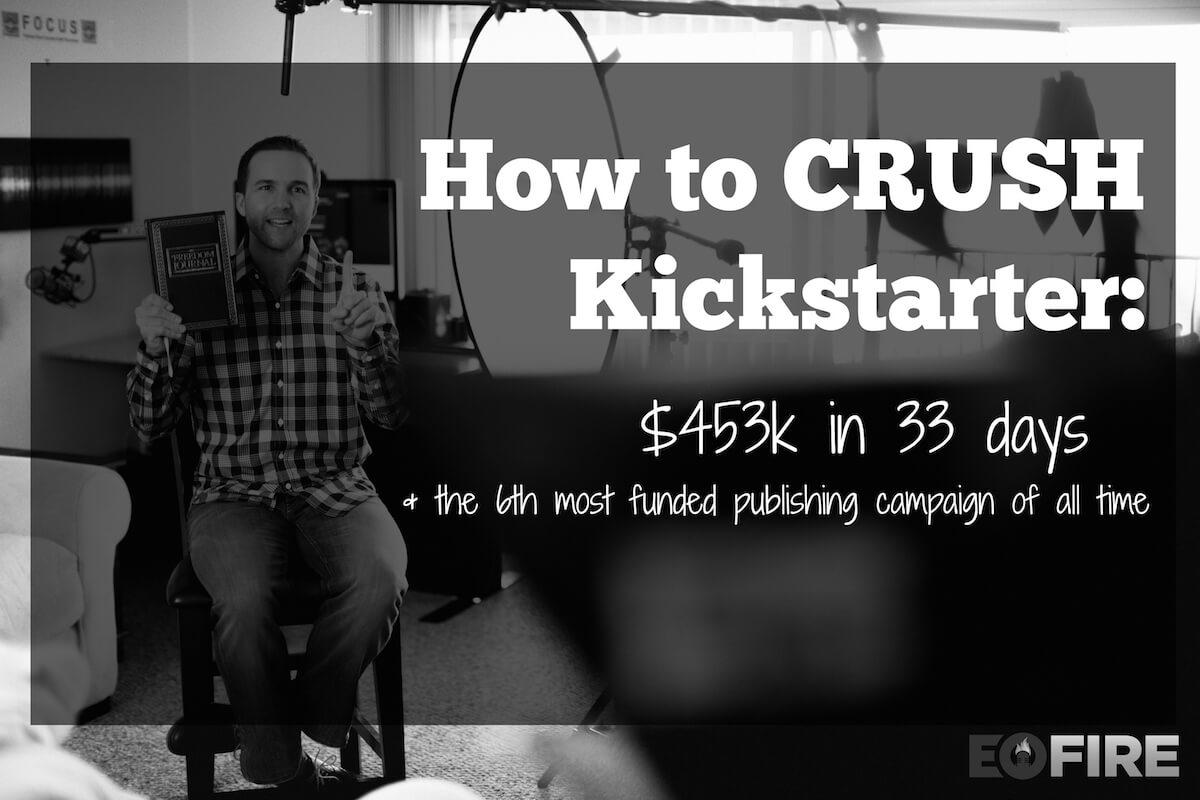
**Updated January 22nd, 2019
How to CRUSH Kickstarter
One day, in January 2015, John and I were walking along Sail Bay in Pacific Beach.
We were reflecting on 2014, and sharing our big goals with each other for the year ahead.
I was anxious to hear about John’s big goals because he’s such a creative thinker and risk-taker; I knew whatever he had planned for his focus was going to be exciting.
It was on that walk John told me about his goal to create his first physical product ever: a journal that would focus on helping people set and accomplish their biggest goals.
Let’s break it down
Throughout this post I’ll be breaking down every step we took in order to go from John having the idea to create a goal setting journal, to actually launching that journal via a Kickstarter campaign that raised over $453k in just 33 days.
At the very ground level of everything I’m going to share is this:
Setting goals is easy. Making them SMART goals can be a challenge. Accomplishing them takes time, discipline and focus.
If you don’t take the proper steps to create a plan for your SMART goal that you can actually execute, then you will never accomplish that goal.
Big goals require that smaller steps be consistently met; that you have checkpoints and review periods in place to help you reflect, learn and stay on course; and also that you have accountability in place.
As I break down the phases John went through on his journey to accomplishing his big goal, keep in mind that each of these phases played a critical role in his success with the launch.
It is because of everything I’m going to cover in this post that John’s goal of launching The Freedom Journal on January 4, 2016 was accomplished.
The 4 Phases: Creating The Freedom Journal
I’m going to break this post down into 4 phases to keep us organized and on track. Those 4 phases are as follows:
- Idea Phase
- Brainstorming & Planning Phase
- Hiring Phase
- Marketing & Launch Phase
I’m also going to include sections that will discuss other project details like stats from our launch team, our biggest lessons learned, and finally, the milestones we hit.
Last, but certainly not least, I was able to get our core launch team involved, so you’ll not only get my behind-the-scenes perspective on our launch, you’ll also hear from each one of our Freedom Journal launch team members and get their perspectives, too.
The Freedom Journal Launch Team
Ever heard the saying: “You’re only as good as the people you hire“?
Each of our team members are pros in their niche, and each of them played a significant role in helping us successfully launch The Freedom Journal on Kickstarter.
The fact they are pros in their niche is no accident; John was actively seeking individuals who were best at ONE thing.
More on how we found these individuals later; for now, let’s meet our core Freedom Journal launch team!
Richie Norton, Prouduct
Richie is responsible for the physical creation of The Freedom Journal. We’ll dive into more details about the specific role he played, and why we couldn’t have done this without him.
Brandy Shea, Mile One Creative
Brandy is responsible for almost every visual you see related to The Freedom Journal. She designed our entire Kickstarter page, and she had a big hand in the overall branding for The Freedom Journal.
Brandon T. Adams, Keys to the Crowd
Brandon is our Kickstarter expert, and he helped us ensure that every step of the way we were doing what was best for the campaign and our visibility and performance on Kickstarter. The set up, the pace, the actions we took leading up to the launch, and a lot of what we did during our launch is thanks to Brandon’s guidance.
Tom Morkes, Insurgent Publishing
Tom is our book launch manager, and he was responsible for igniting well over one thousand engagements leading up to, and throughout, our launch. Why was our marketing so powerful? Because of Tom and his team.
John Lee Dumas, Creator of The Freedom Journal
You didn’t think I’d leave this guy out, did you? ;)
Me! Kate Erickson, Project Manager
I’ve always got questions, I’m always thinking about “what’s next”, and I have a knack for avoiding potential disasters when it comes to bigger projects because I’m obsessed with the details. I was all over quality control every step of the way and because I thrive on project management, this was a great challenge for me!
Ready to learn how John came up with an idea, brainstormed and planned his way to an actual outline, hired a team who could help him bring his idea to market, and then successfully marketed and launched The Freedom Journal to the world on Kickstarter, resulting in over $453k raised in 33 days?
Buckle up, friends – you’re in for a wild ride!
A breakdown of The Freedom Journal launch on Kickstarter
The Idea Phase
Let’s get back to Sail Bay and the walk John and I were on when he first told me about his idea for this journal…
Initially, I wasn’t really sure I “got” John’s idea in the same way he did.
I mean, of course I know what a physical journal is, and I’m a huge fan of goal setting, but as per usual, I had dozens of questions for him…
- What can someone expect as a result if they use this journal?
- How will it be different and unique from the other journals out there?
- Who is going to actually help you create this physical journal?
- How will you launch and sell the journal?
- Wait, what? (Yeah, in true JLD style, this idea definitely went way beyond what I ever could have imaged…)
And while John didn’t have answers to ALL the questions I asked at that point in time, he definitely carried an air of confidence.
I could tell right then and there he was going to create this journal.
A few weeks passed, and John continued talking about his goal of creating a physical journal. (Wondering how on earth you would even come up with a goal like this? Here’s how.)
Each time we chatted, his goal and vision became a little bit clearer.
The purpose of the journal, its uniqueness, and the actual plan behind making it a reality – it was all starting to come into view.
Despite the fact that John wasn’t entirely clear on ALL the things he would have to do in order to make this journal a reality – to actually accomplish this monster goal he had set – he talked about his idea for the journal with everyone who would listen, and it was clear to me John was practicing what we preach here at EOFire:
Regardless of whether or not everything is super clear to you – the plan, the steps, the variables – always keep moving forward; take just one step towards your goal every single day.
Aside from actually doing the research – and the work that followed – the most important first step John took was this: talking about his idea and sharing his vision with others.
Through doing so, he received invaluable feedback from his mastermind, from his online mentors, and even ended up connected with those who ended up becoming huge players on our launch team as a result.
Talking about his idea also got him closer to proof of concept – a huge step in the process of creating anything for your audience.
You always have to ask yourself: “Is this something my audience actually wants and needs?”
Here at EOFire, we’ve typically gone about gaining proof of concept through presenting an idea, then asking people to pay us money for it.
This is how we proved our idea to create our online podcasting community, Podcasters’ Paradise, and our online webinar community, Webinar On Fire.
We didn’t actually create anything except for a presentation to communicate the idea of these communities to our audience.
Then, after our presentation, we asked them to prove to us this idea was something they wanted and needed by paying us money for it.
Only THEN did we create Podcasters’ Paradise and Webinar On Fire.
And guess what? This process worked really well for us. To date, we’ve earned nearly $4 million in revenue from these two online communities.
But The Freedom Journal was a bit different…
When we came up with the idea for Podcasters’ Paradise, our business was barely one year old. We knew our avatar Jimmy really well, but did we really know the true wants and needs of those in our audience who were different from Jimmy?
Proof of concept in the form of money was mandatory for us if we wanted to know for sure we weren’t wasting our time.
With The Freedom Journal, here’s what was different…
- WE’VE BEEN GETTING TO KNOW FIRE NATION FOR 3 YEARS
Our audience, Fire Nation, has been with us from the beginning.
They tune in every single day to hear John talk to a successful entrepreneur, ask them the same exact questions he asked the day before, and we know exactly why they want, need and love what it is we currently offer.
We’ve been listening and getting to know Fire Nation for 3 years now.
- THE SAME QUESTION, OVER AND OVER AGAIN
John has been receiving the SAME question over and over from Fire Nation: “What sets the successful entrepreneurs who you interview on EOFire apart from everyone else?“
After receiving this question hundreds of times, John knew that whatever the answer, there was a want and need for people to know.
So, John set out to answer that question.
- THE POWER OF A LANDING PAGE
Instead of asking people to pay us money for The Freedom Journal before we even created it, we decided to go with a different kind of “proof of concept”: we put up a landing page.
Then, we asked Fire Nation to sign up for more info on The Freedom Journal if it sounded like something they’d be interested in.
The campaign that would follow after someone signed up for more info was pure value: a promise from us to deliver a true behind-the-scenes look at The Freedom Journal project as it was happening.
But check this out: we weren’t just asking for an email address in exchange for valuable info (we know Fire Nation loves the behind-the-scenes!) Instead, we were asking for an email address in exchange for a journey – an experience.
By sharing his own goal setting process with Fire Nation through this early interest campaign, John was already introducing the power of what The Freedom Journal would deliver.
Inviting Fire Nation along on this journey was inviting them to participate in John’s journey to setting and accomplishing his own #1 goal, which is what The Freedom Journal promises: set and accomplish your #1 goal.
Each of these emails was created as we approached a new milestone in creating The Freedom Journal, with strong goal setting lessons in between.
Here’s a quick look at that campaign, which was NOT built out beforehand – I created each and every email as John’s goal progressed.
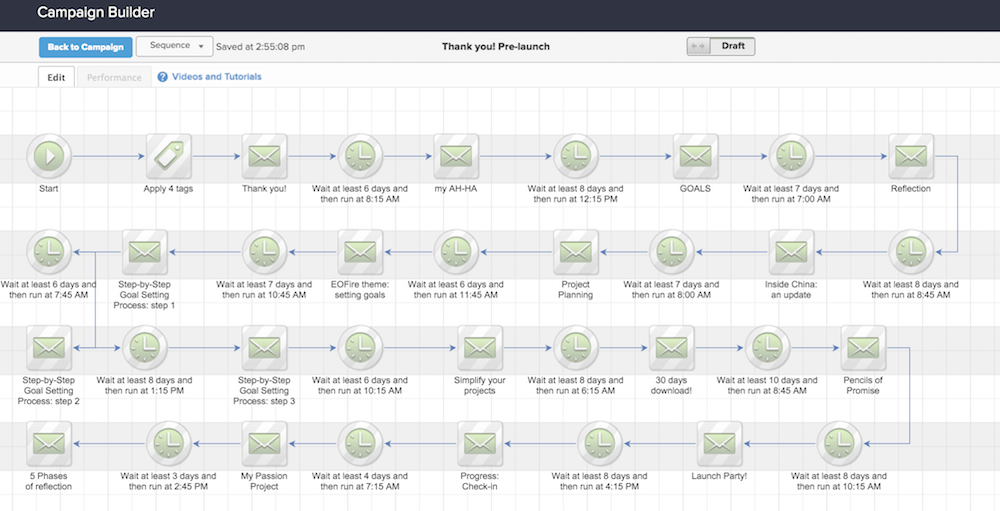
Thousands of people signed up to learn more about this project we were working on long before the actual production was underway, proving to us that the idea of The Freedom Journal was definitely of interest.
Given the experience and knowledge we’ve gained over the past 3 plus years of running EOFire, and having had thousands upon thousands of interactions with our audience, we felt the three things above gave us enough proof to move forward with creating The Freedom Journal.
So while you may not ALWAYS ask for proof of concept in the form of money, it’s typically the best and safest way to go.
In any case, always get proof of concept during your Idea Phase so you don’t waste time, bandwidth and money on creating something your audience doesn’t want or need – even if you think you KNOW they want and need it.
Alright, so John has his idea for the journal, he knows what it will focus on, and he’s starting to see the details and steps a little more clearly…
He also has proof of concept from an audience who has told him they’re interested in his idea.
A goal properly set is halfway reached. ~ Zig Ziglar
Next, it’s time to put a plan in place to actually execute the idea.
The Brainstorming & Planning Phase
From January to April 2015, John continued laying the foundation for his plan by writing out each individual step he needed to take (or thought he needed to take), along with identifying the help he would need to enlist to accomplish his goal.
Planning – especially when it comes to a physical product – can be intimidating.
In fact, when I asked Riche Norton of Prouduct what his take on creating a physical products is, here’s what he had to say:
Creating a physical product is a TON of work.
For example, take a look at any product around you right now; then, imagine all the parts that go into that product (even down to the ink of the printing of the logo, or the sticker with the label or bar code).
Then, imagine this: all those pieces had to come from somewhere.
The raw materials have to be refined; the components have to be made; the pieces then have to come together in one place, (which may have been made in different factories), and be assembled.
After all that, the final product still has to be shipped to a warehouse, and then shipped again to the end user.
It’s a massive process.
If you really think about it, it’s miraculous how physical products are made in our global economy and show up in our homes so we can enjoy them – sometimes within hours of ordering them.
At the end of the day, a physical product is first made with an idea.
It starts in your head.
You put it on paper, and then take the next steps to making your dream a reality.
Every small step counts in the process of eventually creating the finished product.
And just like Richie said, little by little, The Freedom Journal started coming together…
Let’s take a look back at some milestones from the first 4 months after John had his idea…
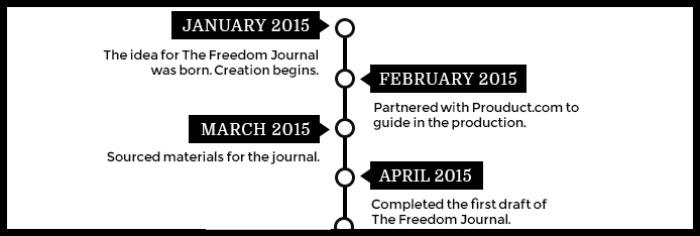
Fun fact for January 2015
In January, with the help of a hot tub brainstorming session on a little workcation in Puerto Vallarta with Jill and Josh Stanton, John discovered the perfect name for his journal.
What started out as “Journal Freedom” eventually became “The Freedom Journal“.
Fun fact for February 2015
On February 10, 2015 John had 8 back-to-back interviews scheduled for EOFire.
One of those interviews was with the Founder of Prouduct, a sourcing solution for physical products.
His name is Richie Norton, and as you already know, he became THE man behind the physical creation of The Freedom Journal.
This partnership was as a result of the post-interview chat Richie and John had that very same day.
Fun fact for March 2015
John started reaching out to respected leaders in our space who could help give him tips and insights on their own publishing journey. After all, this was John’s first go at creating a physical product.
“What have others who came before me done in order to successfully launch a physical book?“
He connected with Jonathan Fields, Founder & Host of Good Life Project. John and Jonathan’s relationship started back on episode 104 of EOFire, and since, John has been a guest on Jonathan’s show and a speaker at Camp GLP (Good Life Project).
While Jonathan was sharing insights from his own experience with launching his book, Uncertainty, he offered John an introduction to the person who put his book together for him.
In the coming weeks, John would be introduced to Sutton Long, the woman who actually compiled The Freedom Journal in its original digital format and helped John come up with the cover design for The Freedom Journal.
Fun fact for April 2015
John started working on the layout of The Freedom Journal by sketching out on paper his first draft outline.
- What would the pages look like?
- What would the design on the cover be?
- Hard cover vs. paperback?
- What types of tasks or prompts should be included?
During this time, John did a considerable amount of research on what other already-existing journals included. He was determined to make The Freedom Journal unique, and this is the stage where he made sure that would happen.
You may have found yourself in a similar situation before: you have an idea and you want to start putting a plan in place so you can turn your idea into reality.
But what if you’re not sure what the steps are that will help make up your plan for accomplishing your goal?
I like to take a 3-step approach to breaking an idea down into actionable steps, or micro-goals, you’ll have to hit along the way.
It starts with setting aside the time to actually do the work: FOCUS.
Carve out just 30 minutes, or 1 hour, to sit down uninterrupted and get started with these 3 steps.
1. JUST START WRITING (choose your focus)
There are things you DO know about the steps you need to take to accomplish your goal. You may not know ALL the steps, but you do know some.
Start writing.
Take out a piece of paper and start writing out what you do know, and then choose the ONE thing you’re going to focus on first based on priority of tasks.
The other steps will present themselves to you in the form of roadblocks or pivots, so don’t be so concerned with what you don’t know right now.
The important thing right now is to start taking action on what you do know.
2. DO RESEARCH
Surely whatever you’re looking to accomplish has been done before by someone else.
Have you typed into Google what it is you’re trying to accomplish, along with words like “how to”, “outline” or “project plan”?
For example, if my goal is to publish a physical book, then I might Google:
How to publish a physical book
or
Project plan for publishing a physical book
Sometimes good old research can take you a long ways towards getting down the smaller steps and milestones you’ll need to hit in order to accomplish your bigger goal.
Again, the rest of the steps will come to you, but you have to get started in order to figure them out.
3. ASK OTHERS WHO HAVE ALREADY DONE IT
We are ALL standing on the shoulders of giants; ask others who have already done what it is you’re trying to do what they did.
It doesn’t mean you’re going to copy them or steal their ideas; you’re simply giving yourself a place to start.
In order to find people who have already done what you’re trying to do, join an online community that is focused in the area your goal is about; reach out to your existing online contacts, mentors, or mastermind members and simply ask: “Have you ever done this before, or do you know someone who has?“
Start talking about what it is you’re looking to accomplish and you’re bound to find someone who has either:
– already done it themselves,
– knows someone else who has done it, or
– can make some educated recommendations that will help you take your next step forward.
Once John had written out the steps he knew he needed to take in order to accomplish his goal, he could then start creating a timeline and delegating those parts of his plan he knew he couldn’t execute alone.
I’m going to dive into what the timeline and delegation looked like in the next Phase, but first:
Always remember what it is you’re best at, and when you come across a step or part of the process that seems super scary because you have NO IDEA how to accomplish it, reach out to someone who does.
Not sure what you’re best at?
Ask 5 friends and family members to write down 5 things that they think you’re best at.
Simultaneously, start making a list of all the things you have experience doing – things you’ve done in previous jobs, or things you were really good at in school.
You might write down that you’re good at things like:
- working with numbers;
- coming up with creative ideas;
- managing a lot of moving pieces;
- seeing the big picture;
- attention to detail;
- noticing missing pieces;
- taking an idea and then running with it…
Also think about when you’re most excited about working on something. What is your role in those situations? What part do you play really well and enjoy doing?
Now that you have an idea of what you’re best at, let’s talk about what you can do with the parts of your plan you know you’re NOT best at.
We talked about how we turned to those who are pros in their niche for help at the very beginning of this post. Perhaps as important as taking action yourself is knowing when and what to delegate to someone else.
The digital design, the illustration, the editing, the production, the materials, the distribution… these were all tasks on John’s plan that he listed out when going through the 3 steps I outlined above; they’re also all areas John is not an expert in.
Here’s a look at what John’s initial plan (him simply writing out the steps he knew he needed to take in order to accomplish his goal) looked like:
First things first, John needed to create a mockup of how he envisioned the journal looking.
So, the first step on John’s plan?
- Create a mockup of The Freedom Journal
No fancy designs or perfect pages – just a sketch of how the pages and the journal overall would look.
Pretty straightforward, right?… You want to create a journal, so in order to do that, a clear step in the beginning of the process would be actually drawing, sketching, or outlining what that journal will look like and include.
As a result of taking action and completing this first step, John realized he needed someone who had experience actually putting books together digitally and designing layouts.
He wouldn’t have thought about this had he not gotten started, but because he took his first step, he was presented with his next.
Instead of wasting his own time working IN all of these areas when he could be leveraging his time working ON the project as a whole (the timing, the marketing, the outreach, the vision & message he wanted to communicate), John went in search of his launch team.
“Our goals can only be reached through a vehicle of a plan, in which we must fervently believe, and upon which we must vigorously act. There is no other route to success.” ~ Pablo Picasso
Accomplishing your biggest goals doesn’t happen haphazardly, and it certainly doesn’t happen alone.
Once you’ve started drawing out a plan and the steps you’ll need to take along the way, find the support you need and ask for help.
The Hiring Phase
As John started taking just one step forward towards accomplishing his goal, his next steps started to reveal themselves.
Once he had created a mockup of how he wanted The Freedom Journal to look, he needed to find someone who could help him put it together.
Good thing he had that conversation with Jonathan Fields… as you already know, for this step of the process John hired Sutton Long.
Sometimes all it takes it asking around to see if anyone you know can recommend someone who specializes in X in order to find the perfect person for the job.
This would be the very first delegated task John would hire for – well, other than partnering with Richie for the physical production of The Freedom Journal.
Bringing Sutton on board created a sort of domino effect in the hiring process.
As John continued to take one tiny step forward with the creation of The Freedom Journal digital file, he realized there were a lot more steps in the process he hadn’t thought of – and that he knew he couldn’t do all on his own.
By the time Sutton had the very first digital file for John to review, the next several steps in his plan started to present themselves.
This is when I stepped in to start overseeing the project details, manage the moving pieces that were coming into play, and call out things that might be missing.
So you have an idea of what the process looked like as these new steps starting presenting themselves and we began looking for the individuals who would become a part of our core launch team, here it goes…
Once I had the digital journal file from Sutton, and a request from John to start making moves to bring this version 1 file to a final file for printing, I started with what I already knew needed to happen.
You can think of this like my own mini plan within John’s overall plan:
- Printer specifications;
- Editing;
- Revisions;
- Details check;
- Final design.
While these may not be the exact steps – or even all the steps – that come to mind when you receive the first version of something and are tasked with making it final, I bet looking at them now they seem rather obvious, right?
Of course, before something becomes final and is ready to send off, you need to know what you’re sending off. So my first step was to confirm any specifications the printer expected when they received the final file.
Then, as is true with anything we create, I knew there needed to be an editing process. This was especially important with this project because we were requesting 10,000 prints of The Freedom Journal our first go-around.
When you think in those terms, 1 tiny mistake actually results in 10,000 mistakes.
While I’m typically responsible for a lot of the editing that goes on here at EOFire, I knew we couldn’t take the risk of my less-than-professional editing skills on a project this big.
So I reached out to an editor I used to work with at an advertising & marketing agency to help with the editing process.
I knew her work was TOP NOTCH because I had worked with her on very similar projects for over a year; I also knew she was working as a freelancer at the time.
Luckily, she said yes, and that’s the day we hired Whitney Henry as our editor.
While Whitney was working on her first pass, I realized it would be beneficial to introduce her and Sutton; after all, there was no need for me to be the middle woman when going from editing to revisions.
Because I had worked with Whitney a TON at the agency, it was a great combo; I was able to quickly get answers to any questions related to the mark up from Sutton, and I was also able to check Sutton’s revisions with confidence.
Here’s a look at parts of Whitney’s first pass on editing:
…and this is exactly why we needed to hire a pro for this part of the process!
As the editing and revisions were happening, I started going down my list of steps, paying a little more attention to the details – like the quotes that were being used and the recommended resources that were included – and also to the overall design.
During this “close review” is when I realized we could definitely step up our game with the illustrations inside of the journal (see that group of people with their hands in the air in the image above? Yikes!)
I’m not a designer, nor do I claim to be anything more than a sub-par drawer. What I did know is that the placeholders were not in line with our brand or the desired feel of The Freedom Journal, and I knew I could communicate that well – I just wouldn’t be able to create it myself.
If we wanted this done right, we were going to have delegate this task.
In order to take the next step with the illustrations, I reached out to our designer, Brandy Shea, and I asked if she could help us source illustrations for the journal.
Brandy has been doing work for us for nearly 3 years; knowing her expertise and familiarity with our brand, I knew she was the right person to turn to.
After she accepted, I wrote her an email that included details about the style we were going for and the overall look and feel we wanted the journal to have.
I also sent her the cover design that John and Sutton had created, along with some examples of illustrations that I liked and thought would be a good fit for the inside.
Here’s the exact email I sent to Brandy at this stage in the game. It was sent on June 22, and included these points and details:
As per usual, Brandy nailed it!
She got to work sourcing illustrations for us, and within a month we had landed on our final design elements for the inside of the journal, which are the same ones you see in The Freedom Journal today.
Alright, let’s check in with our timeline…

Fun Fact for May 2015
What started out as a scanned copy of John’s mockup being sent to Sutton, and then John passing a PDF version from Sutton over to me for editing, resulted in two team members being hired to help: Whitney and Brandy.
Fun Fact for June 2015
We went through the editing and revision process 6 times before we discovered that the first 10 day sprint was completely missing!
Fun Fact for July 2015
John and I took a trip out to Maine to see his family, and we met up with Whitney at a cafe where she handed over the hard copy edits she had done. WOW! It was so cool to actually hold something that was directly tied to John’s goal for the first time; everything up to this point had been digital.
John rescheduled an interview for late July that he had originally planned on doing in September with a guy named Brandon T. Adams. It was during this rescheduled interview in July that Brandon introduced himself as a crowdfunding expert and subsequently was brought on board The Freedom Journal launch team.
Fun Fact for August 2015
Richie was prepping for his trip to China in order to oversee the actual printing of The Freedom Journal!
Simultaneous to all of the moving pieces I was managing, John was focusing on the very beginnings of the marketing and outreach plan for The Freedom Journal.
After dozens of conversations with Brandon and others who had done book and physical product launches before him, John decided he would launch the journal on Kickstarter. More details on the reasoning behind the Kickstarter decision ahead…
Once Brandon was on board and ready to help us with the Kickstarter aspect, John went in search of a book launch manager.
At this point, the whole hiring phase might be starting to sound like it was all a little too easy, right?
How did all these team members just “appear” for us?
How did we even know we need these people on our team in the first place?
Again, as we continued taking one step forward on our journey to accomplishing this goal, we started realizing other steps – other pieces of the puzzle – that were missing.
If John wouldn’t have come to me and asked me to edit Sutton’s digital file of the journal and take it from version 1 to final, then we would have continued on, not realizing we actually needed an editor.
We also probably never would have guessed we’d need a designer for the illustrations – we only realized these things once we had gotten to the review stage, at which point it was obvious things like the existing illustrations weren’t going to cut it.
And speaking of unexpected steps… Brandy’s contribution to The Freedom Journal launch team went way beyond just sourcing illustrations.
When I talked to Brandy about the time she spent on The Freedom Journal project, and the number of design iterations she went through from start to finish, here’s what she came back with:
Number of design iterations for our Kickstarter page
I’d say that I probably mocked up about 3-5 branded “themes” before settling on the Kickstarter launch theme we ended up using.
We also tried quite a few variations of the frames around each individual picture you saw on the Kickstarter page (3+); the section headers (7+); the reward level graphics (3+); and the campaign cover image (which was updated 10+ times during the live Kickstarter campaign).
The overall planning and mockup process was actually pretty similar to designing an entire website.
Leading up to the January 4 launch, Brandy clocked 64 hours (this was in December alone) working on graphics and The Freedom Journal design – that’s just for the Kickstarter page! (So that doesn’t include time spent creating other web graphics, images we used for ads, or any of our social media assets).
Additional marketing materials created by Brandy
- Cover images advertising the launch of the Kickstarter campaign for Facebook, Twitter, YouTube, & Google+;
- Cover image for The Freedom Journal Facebook group;
- Sidebar graphics for the EOFire website (created about 3-4 different versions);
- At least 5 different sets of graphics for Facebook and Instagram ads.
Number of photoshoots we did for the campaign: Seven!
- Brandy did 3 photoshoots to get “hero shots” of the journal;
- Brandon did 1 photoshoot of the journal “in action”;
- John and I did 2 separate professional photoshoots to get the lifestyle shots you see on social media and in our marketing;
- We had a photographer at The Freedom Journal Launch Party to take shots of the journal.
This is not to mention the hours we spent with Caleb Wojcik and his team to create, shoot and produce The Freedom Journal Kickstarter video, which you can check out a “behind the scenes” look at right here.
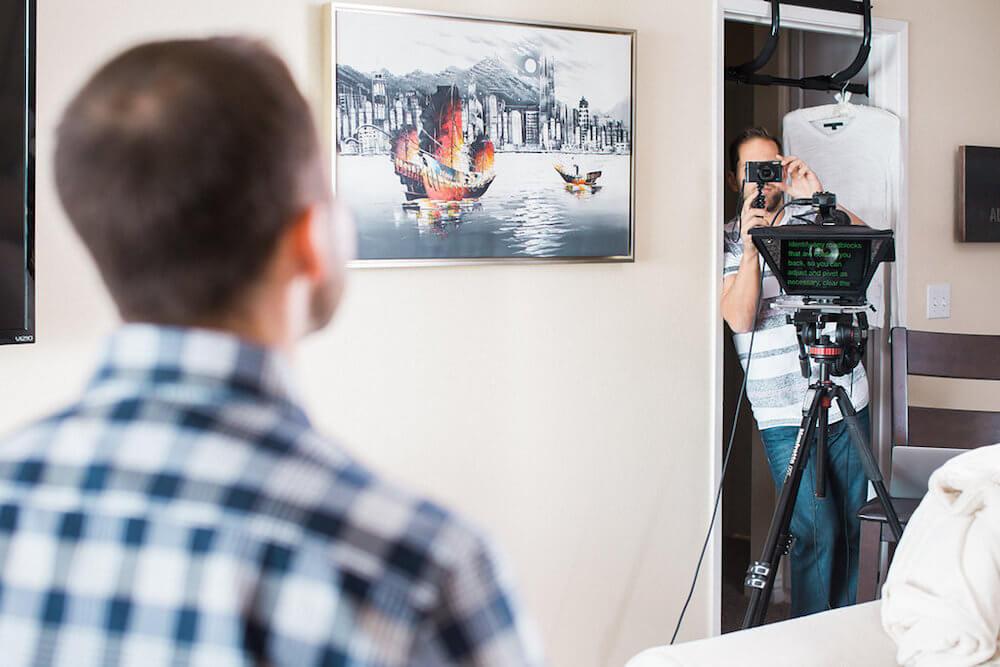
Image credit: Caleb Wojcik, editing: Jen Wojcik
Wait, who’s Caleb, and how did we know to hire him for our Kickstarter video?!
Well, we’ve known Caleb for quite some time now – first as a fellow entrepreneur who lives in the San Diego area, then as a fellow mastermind member, and most recently, as a guy who is really amazing at what he does: videography.
Getting an inside look at Caleb’s business and the direction he wanted to take it from being in a mastermind together, we knew he’d be perfect for the job.
So, we reached out, asked if he would be able to help, and he said “YES!”
Now I don’t want you to think we just magically knew these were all the things we needed to create, and that these were all the people we needed on our team.
It was one step at a time that led us to realizing we definitely needed an editor, a designer, a Kickstarter expert and a book launch manager (among the many other team members you’ve heard me mention throughout this section).
And so once we started diving into the strategies and recommendations from Brandon around the Kickstarter launch, that’s when we realized we needed someone who could keep an eye on – and help us oversee – all the moving pieces.
There were A LOT of moving pieces.
Tom Morkes became our sixth launch team member, which completed our dream team for The Freedom Journal launch.
The Freedom Journal Launch Team

From top left to right: Brandy Shea, John Lee Dumas, Richie Norton, Brandon T. Adams, Kate Erickson, Tom Morkes
If you’re working on launching a Kickstarter campaign, you certainly don’t have to have the same set of team members, or even put together all the marketing and launch materials we did.
The time spent on editing, designing, planning and sourcing illustrations, all the way down to the exact number of hours Sutton spent on putting our final digital file together, or that Brandy spent prepping our Kickstarter page for launch, will vary depending on your project.
This is meant to be a guide – not the exact steps everyone has to take in order to be successful on Kickstarter.
“You cannot change your destination overnight, but you can change your direction overnight.” ~ Jim Rohn
One – step – at a time.
The Marketing & Launch Phase
Now that our entire launch team was in place, it was full steam ahead on laying out our marketing and launch plan.
Once John decided on Kickstarter as a launch platform for The Freedom Journal, a lot of our marketing plan was created – and played off of – that decision.
Given the authority of the Kickstarter platform, we would be treating Kickstarter like our “home base” for the 33 days of the campaign, and knowing where we wanted to send people (to the Kickstarter campaign) made it much easier for us to determine what types of marketing communications would be most beneficial.
Before we dive into the specifics of why Kickstarter played such a powerful role in our launch, let’s check in with our timeline as we move into the Marketing & Launch Phase so you have a good grasp on where John was at in terms of accomplishing his goal:
Fun Fact for September 2015
We got to do a killer FaceTime call with Richie while he was walking through the factory as The Freedom Journal was being printed! Here it is:
Fun Fact for October 2015
John called up Richie at essentially the “twelfth hour” and told him we had to add a second strap to the front of the journal to hold pages down on both sides – something that was never in the initial plan, but that John saw on another journal and knew we had to implement ourselves.
That’s not all… I asked Richie if there were any other “late adds” and he shared this fun little fact:
John was very particular in what he wanted. For example, the bookmark had to be just right. In fact, the factory had to go to the marketplace and buy special material that met John’s specifications for the bookmark, and then they had to dye it from white to gold. It was intense!
Fun Fact for November 2015
We received a shipment at our front door of the very first set of Freedom Journals, and that same week John personally shipped out Freedom Journals to key influencers, including our “33 day” EOFire guests. (More on the 33 days in a minute…)
Fun Fact for December 2015
John started out with over 40 levels for the Kickstarter campaign, but after speaking with several Kickstarter experts, including Clay Hebert of CrowdfundingHacks.com, he narrowed it down to just 17 levels for the Jan. 4th launch.
Let’s focus on the production aspect for a minute: to Richie’s point before, creating a physical product is a lot of work.
So when I asked Richie how many people were actually involved – like all-hands-on-deck in China – here’s what he shared:
Estimate: On the actual book there were probably about 100-150 people’s hands involved in printing, binding and packaging.
But when you consider all the components it took to produce each part of the book, we’re talking about hundreds more.
For example, the cardboard inside the cover comes from one supplier; the faux leather from another supplier; the paper from another supplier; the gold edging from another; and so on and so forth.
I think we could be conservative and say if you go down to the raw materials, it could be anywhere from 300-400 people that worked in one way or another to produce The Freedom Journal.
Here’s a look at the journal actually being printed, bound and shipped from overseas:
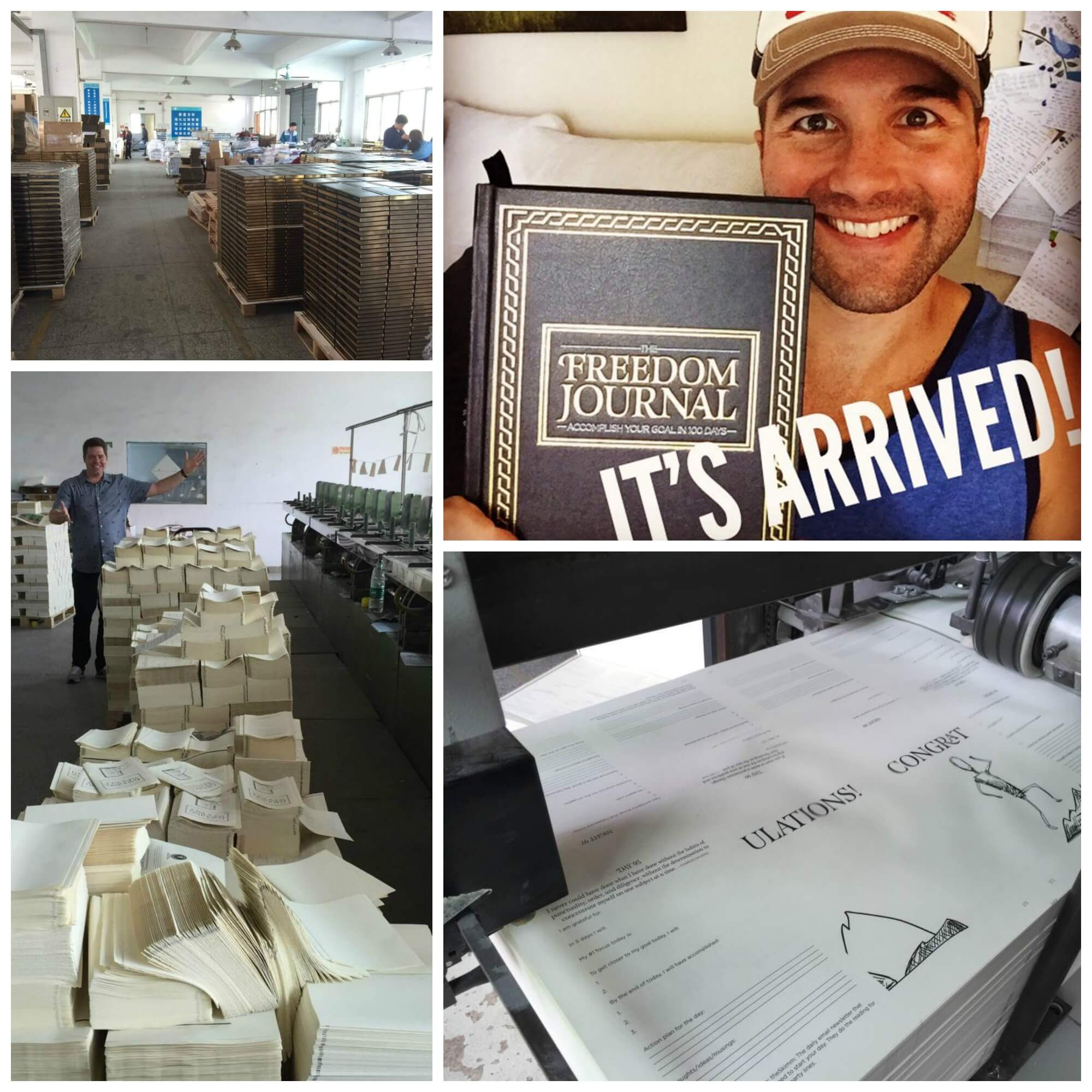
See that guy standing back there behind the millions of Freedom Journal pages? That’s Richie on the ground in China overseeing the press.
So now that you have an idea of where we’re at timeline-wise, let’s dive into why Kickstarter was such a powerful platform for us, and what aspects of the Kickstarter platform we leveraged in order to have such a successful launch.
Why Kickstarter?
This is one of the most common questions we’ve received from our audience throughout our journey to launching The Freedom Journal.
Here are some of the major reasons why we chose Kickstarter vs. just using our own platform, EOFire.com:
1. The platform and potential exposure
Stats don’t lie – check out the reach of the Kickstarter platform to date (stats taken from the Kickstarter website on March 14, 2016):
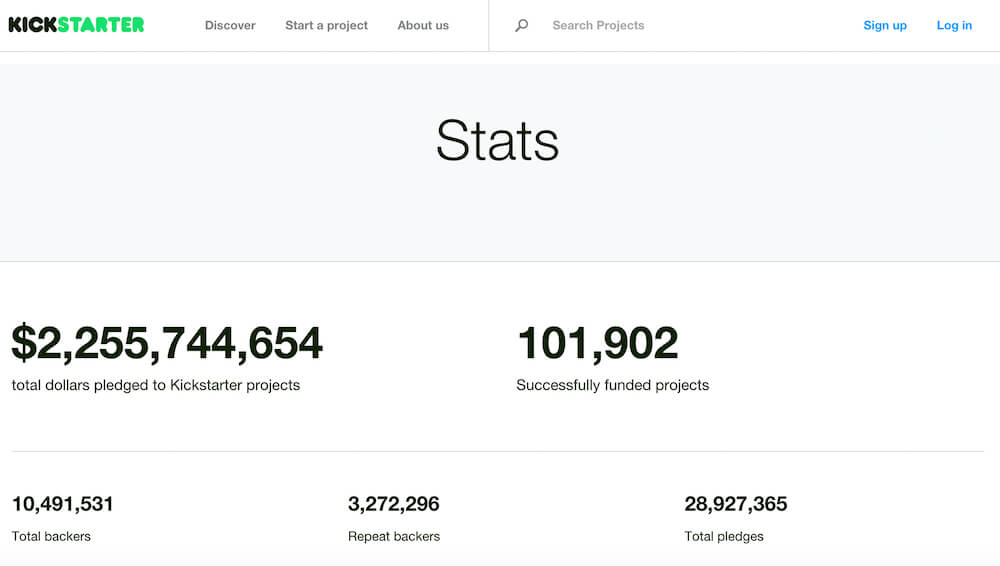
When you have the opportunity to leverage a platform that will help you promote your project and has this sort of track record, why wouldn’t you use it?
Plus, Kickstarter was providing us with a non-biased 3rd party for our launch. There is no gray area or question as to whether or not we actually had over 7,000 backers or raised over $453k during our 33 days on Kickstarter. It’s fact.
2. The customization and opportunities
Kickstarter not only allows you to create your own page with your own design for your project, you can also create multiple levels for your backers to choose from.
If we were to simply promote The Freedom Journal launch on our website and still try to introduce multiple levels to our audience, it would take special coding, multiple plugins and we’d probably get less than half the visibility and stats on the project as a whole.
With Kickstarter, we were able to create a $2 level, a $39 level, a $250 level – even a $10,000 level – all with a few dropdown selections and the click of a button.
Plus, Kickstarter gave us detailed reports and updates on who was buying, where they were buying from, and what they were buying whenever we wanted.
The capabilities of the Kickstarter platform really helped bring what we could offer – and who we could offer it to – to the next level.
3. The engagement and participation
Crowdfunding brings people together. It gives backers something in common (supporting a campaign) and it allows you, the project creator, to bring your backers into your world.
Giving people ownership and a part to play in the process makes a huge difference. As humans, we want to be a part of something and we want to participate in experiences.
Kickstarter allowed us to bring our community along on this journey with us to launching The Freedom Journal. They weren’t JUST investing in a journal, they were investing in an experience with us.
Again, having Kickstarter nailed down as our launch platform helped shape all of the marketing we would do leading up to, and during, the campaign.
Now that we had the Kickstarter platform on our side, it was time to get creative with the marketing tactics we’d use to get people there.
Marketing plays a huge role in not only helping you bring what it is you have to offer to the world, but also in helping the world find what it is you have to offer.
After a ton of back and forth and a lot of brainstorming we settled on 5 key marketing tactics we would use together to make a huge splash.
There were of course a lot of marketing ideas we tossed around that didn’t make the cut, but more on that in our lessons learned section.
Once we had settled on the 5 key marketing tactics, we did what we could to divide them amongst the launch team members, each of us having an area where we would “take the lead” so to speak.
When it came down to planning and organizing the several moving pieces that would eventually come together to make up our marketing strategy, there were a lot of tools we leveraged to help.
As an example, Tom and his team use Basecamp as a communication and project management tool, and Basecamp is where we kept track of who was doing what and where we were at in the process with a lot of strategies. A new thread for each idea helped us keep things straight.
For example, one of our threads was specifically related to how we were going to get our Press Release picked up.
We also had a thread that was dedicated to keeping track of the guest posts we were writing and when they actually went live.
This helped us keep on top of the content we needed to create, and who was in charge of that piece of the puzzle.
Google Drive and Dropbox were also two tools we used A LOT throughout the campaign to share documents and files quickly and easily.
Alright, let’s review the 5 key marketing tactics we used first, since they were all things we did far in advance of our actual launch; then we’ll dive into what actually happened on launch day and beyond.
The 5 key marketing tactics we employed to crush our Kickstarter Campaign
1. Making The Ask
One of the biggest marketing tactics we employed throughout the entire campaign was The Ask.
John has now interviewed over 1,200 entrepreneurs, and for the past 3+ years he’s been building relationships with these people and giving as much value as possible away to those he has connected with.
The Freedom Journal launch was John’s opportunity to now ask for their help.
Remember earlier when I mentioned that Tom, our book launch manager, was responsible for over one thousand engagements?
Tom was the lead on The Ask marketing tactic because this is what he does: he helps manage book launches, which always require that you have some type of support from others in your industry or niche in order to launch big.
That support might be by way of a testimonial, a foreword, or them actually sharing your project with their audience.
With Tom and his team’s help, we sent emails requesting support from every single interviewee who has ever been on EOFire.
Here’s the initial outreach email Tom sent to each of our past guests on EOFire:
When Tom received replies back from these outreach emails, it was our #1 goal to get people to share The Freedom Journal on January 4th with their audience via an email.
So when someone responded saying, “Yes, I’d love to help out; send me the info!“, then Tom would reply with another email that focused on what we wanted most.
We’d say something like…
“While any support you could give would be very helpful and much appreciated, we are looking for your support from the most powerful touch point you have with your audience: an email to your entire list about The Freedom Journal.“
We know the power of a list, and so that was our #1 goal with each and every contact we reached out to.
Those who agreed to email their list were on our pre-release list: we sent The Freedom Journal to those who were willing to help support the launch so they could feel confident about what it was they were recommending.
We also included a link to a detailed page in these reply emails, where those who wanted to support could find all the info, links, images and direction they would need in order to make it as easy as possible. This is sometimes known as “swipe copy”, or “swipe files”.
This is really important when you’re considering asking others for help: you have to make it EASY for them to say yes! We’re all incredibly busy, and it’s easy to forget about things.
Having a central place where our supporters could find everything they needed to share The Freedom Journal with their audience, along with email reminders from Tom and his team about key dates, was central to making The Ask work.
Without consistency and follow up, The Ask could have very well fallen flat. Thanks to Tom, it was our most powerful marketing tactic.
Here’s a look at the results of our over one thousand engagements leading up to The Freedom Journal launch campaign.
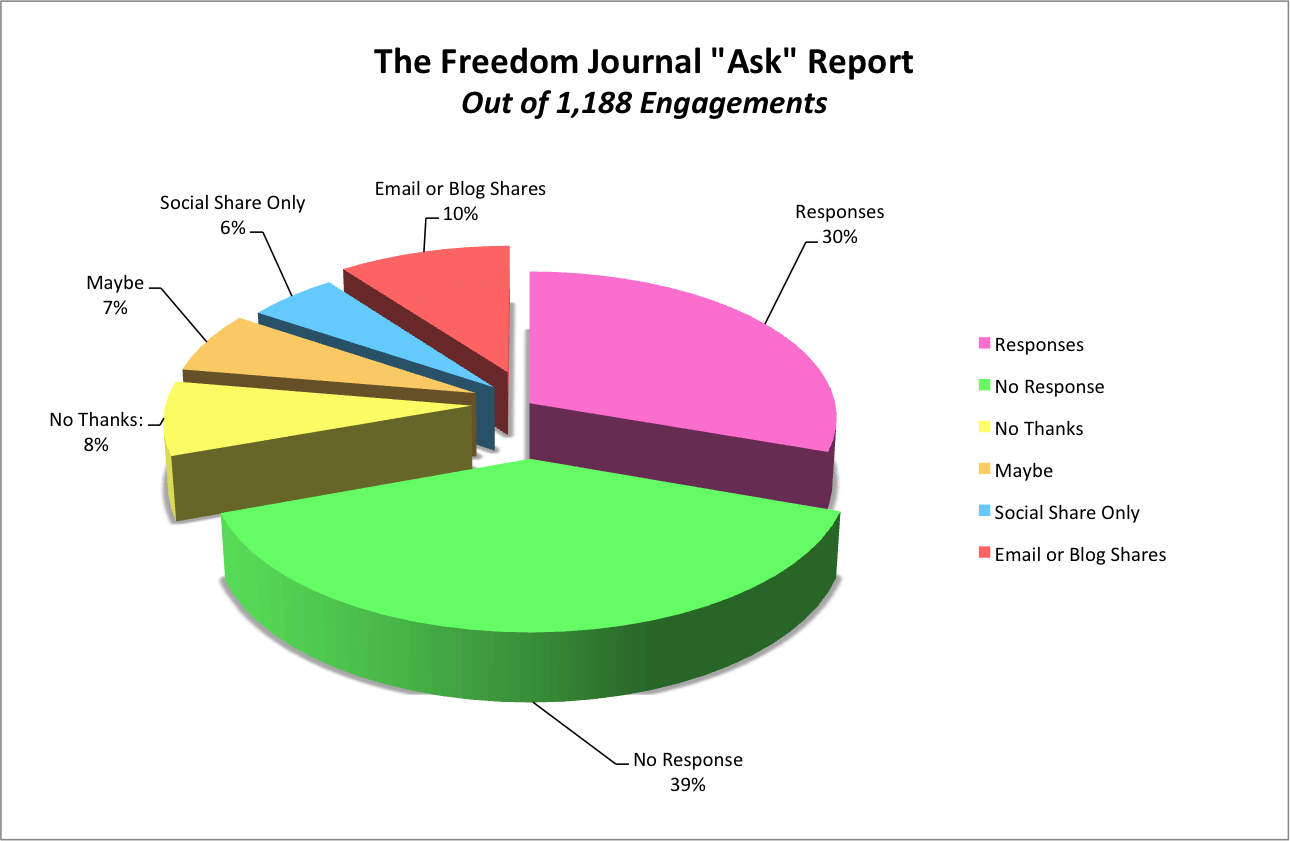
If anyone couldn’t or didn’t want to write an email for whatever reason, then we would ask if we could contribute a guest post to their site.
Many took us up on that offer, and for those who didn’t take us up on that offer, we’d ask if they’d be willing to help us share on social media.
When I started digging deeper in to the numbers to get more specific stats on the number of engagements Tom and his team made, along with the results of those engagements, he added up that from Dec 3rd to Feb 4th, his team sent 7,643 emails (that’s an average of 6.4 emails per influencer)!
Makes you feel a little uncomfortable, doesn’t it?
I’m very self-conscious when it comes to over-stepping my bounds, and making The Ask can be uncomfortable for many of us, especially when we’re first starting out.
Guess what?
We might have gotten a few emails here and there telling us it was enough – to stop emailing – but we’re still alive.
You miss 100% of the shots you don’t take. ~ Wayne Gretzky
So you can see from The Ask – our #1 marketing tactic that was ONLY our #1 because of the relationships John has been building over the past 3 years – launching a campaign like this definitely doesn’t start with the launch day, but far in advance of that.
When I asked Tom about the success of The Ask, here’s what he shared with me:
We estimate that the emails and blog posts alone reached over 1/2 a million eyeballs.
We were able to secure 7 guest posts on other influencers’ sites, and John did over 15 interviews on other influencers’ podcasts for The Freedom Journal.
Some of our guests posts were included on top sites in the industry, like JoelComm.com, ZiglarVault.com, and Observer.com.
John’s interviews on other podcasts included appearances on Amy Porterfield’s Online Marketing Made Easy podcast, Andrew Warner’s Mixergy, Dan Miller’s 48 Days podcast, Ray Edwards’ podcast, Lewis Howes’ School of Greatness, and Michael Stelzner’s Social Media Marketing podcast, among many other greats!
And talk about consistency!
Here’s a look at a graph that shows the number of emails and meetings set for The Ask portion of this campaign by Tom and his team from December to February:
But aside from making The Ask, there were several other moving pieces to our overall marketing strategy for The Freedom Journal…
2. The 33 day push (our content marketing)
Most people launch a product, and everything they do leading up to launch day culminates and explodes on that one day.
Not with The Freedom Journal campaign ;)
John came up with the idea to make this launch last the entire 33 days of the Kickstarter campaign, which then opened up other creative marketing ideas for us to implement.
I remember the day John came into my office and wrote on my whiteboard:
TFJ – 33 days of launch
He then walked over to the closet and took the medicine ball out and started to sit down…
That’s when I knew he had come up with what could only be assumed an idea of epic proportions. (When John takes out the medicine ball, a big idea is about to be introduced.)
I remember having the conversation about what the 33 days would “look like”, and John saying this…
Kate, it’s not about coming out hard and strong on just 1 day – it’s about engagement, having people on this journey with us, and it’s about creating an experience.
Why only create an experience for 1 day when you could create it for 33 days straight?
Duh… why didn’t I think of that?!
Nonetheless, I knew it would require a lot of planning and preparation to be able to go strong for 33 days with the various channels we selected for this marketing tactic. It wasn’t just going to be 33 days on Kickstarter, it was going to be 33 days “everywhere”.
Let’s break down the 33 day content marketing strategy we put together…
33 Days on EOFire
John set up an epic 33 days on the EOFire podcast: a new interview every day with a previous guests who he loved, and who he knew Fire Nation loved, too.
But these weren’t just going to be any old EOFire interviews; each of these interviews was specifically focused on goal setting, which helped John and his guests share some incredible tips and facts around the “why” and “how” of setting and accomplishing goals.
This idea also introduced the opportunity for John to update our listeners every single day – in real time – on the campaign (this was in the intro of that day’s episode). This resulted in 2 things:
1. A strong call to action every day;
2. Another way for those involved to feel a part of something much bigger.
These special goal setting episodes also introduced the opportunity for our guests to share with Fire Nation why setting and accomplishing goals has been so integral on their journey, and also for them to share their interview with their audience, thus exposing The Freedom Journal to a potentially whole new set of eyes and ears.
We also sent The Freedom Journal to every single one of these 33 guests well in advance of their interview, giving them the opportunity to speak directly about The Freedom Journal during their chat with John.
Here’s what Brandon thought about John’s “33 Days” on EOFire idea:
We promoted The Freedom Journal campaign on John’s podcast all 33 days of campaign, and even better we had each of those 33 guests talk about how they personally have set and accomplished their own goals.
This marketing approach during campaign was genius!
I’ve never seen this done before, and I believe this was the #1 factor that contributed to the success of the campaign.
It’s very powerful when you have 33 successful entrepreneurs talk about how The Freedom Journal is a great tool everyone should have.
The amount of testimonials that generated from authority figures was priceless.
33 Days on The Freedom Journal Podcast
What would 33 days worth of targeted, topic-specific, evergreen episodes be without their own podcast to showcase them?
John also launched The Freedom Journal podcast, which featured those same 33 interviews he published on EOFire. Repurposing content can be a powerful way to expand your reach, and this was no exception.
Here are a few more reasons why John decided to launch The Freedom Journal podcast as a separate podcast:
- Take advantage of being a NEW podcast in iTunes (New & Noteworthy = added exposure);
- Be in different categories to reach a potentially new audience;
- Have a standalone archive of these incredible interviews to easily refer people to any time – this is evergreen content!
- It’s one more place people will potentially be being exposed to EOFire for the first time.
33 Days on Kate’s Take
Following suit, but not quite so intensely, I launched into a whole new format – my first Season – on Kate’s Take.
Fittingly, Season 1 coincided with the launch of The Freedom Journal, and each of the 11 episodes I released from Jan 4th – Feb 5th (the exact duration of the Kickstarter campaign) were focused on goal setting.
Each of my calls to action and every example I gave throughout the series in one way or another related to teaching how others can set and accomplish goals, John’s journey to creating The Freedom Journal, or how The Freedom Journal could be a helpful tool.
33 Days on Kickstarter
Of course, we can’t discount the power of Kickstarter as a platform for exposure all on its own, as I detailed out above. This was Brandon’s area of expertise, and therefore he’s the one who had his finger on the pulse of the campaign.
We spared no expense when it came to making sure our Kickstarter page was the best it could be, and we continuously improved minor – and major – things throughout the entire campaign (continuous improvement!)
Perhaps the most important part of being on the Kickstarter platform was actually making sure we were leveraging it all 33 days.
Throughout most of the 33 days we were featured in the Top Publishing Campaigns on Kickstarter and made it on to Product Hunt with 49 up votes.
We were also able to leverage our positioning and progress on the Kickstarter platform to pitch The Freedom Journal story to local news stations and in multiple Press Releases that we submitted.
Those Press Releases resulted in features on CBS, Fox News, and many other outlets.
This was an all-hands-on-deck tactic, which required that Tom and Brandon be leveraging their connections with news outlets and Kickstarter; John be leveraging his brain for new and unique ways to spin our story; Brandy be leveraging her design skills to help us present the project; and me? I wrote A LOT of stuff!
Ready for the kicker?
I’m not even a Press Release writer!… but I do know how to do research.
PRWeb became my home base to study and find out how Press Releases are written. They have a ton of free knowledge based tutorials, along with checklists that will walk you through what a Press Release should look like, how long it should be, what it should include…
Just because you haven’t done something before, or you’re not a pro at it, doesn’t mean you can’t take a crack at it. What’s the worst that could have happened?
Our content marketing strategy as a whole resulted in us creating the following pieces, each directly related to our campaign launch:
- The Freedom Journal interest campaign (for the months leading up to the Kickstarter launch);
- The 30-day PDF giveaway (opt in offer once we went live, and what followed was an email directing people to the Kickstarter page);
- Your Goal Setting Guide giveaway (thanks Matt & Pete from Atomic! – another opt in offer);
- 40 Guest Podcast episodes;
- 11 Guest Posts;
- 11 Email updates sent out via Kickstarter;
- 27 Broadcast emails sent from Infusionsoft to our interest list (not including our interest campaign emails themselves);
- 34 Interviews on EOFire (also replicated on The Freedom Journal podcast).
Because it’d be crazy to name everyone who jumped in to support The Freedom Journal campaign by way of content marketing during our 33 days, we put together a thank you for everyone here!
Remember, everything we did during these 33 days – regardless of what platform it was on, who was saying it, or where people were finding it – was directing people to the Kickstarter campaign.
Having a consistent call to action, something people will hear over and over and over again, is important. In fact, it can sometimes take seeing or hearing the same exact thing 7 times before someone will take action.
Having a single place to direct people was key to our success on Kickstarter.
3. Reaching out to & involving Fire Nation
Let’s face it: “build it and they will come” doesn’t work in the online world, which means we are incredibly lucky to have an audience as amazing as Fire Nation, who we turned to for support.
When I was chatting with Brandon, I asked him why he thought our Kickstarter campaign was so successful compared to most. His response?
The fact that we already had a community (Fire Nation) in place to help support this campaign from the start made it more powerful. It allowed us to engage an existing audience and see that audience become more involved and come together as a family to support The Freedom Journal.
Having credibility is HUGE when doing a Kickstarter campaign.
You need to gain trust from the crowd in order to get them to support your campaign.
With John’s credibility from having built EOFire and providing so much value to an audience for several years leading up to this launch – that allowed us to gain instant trust on day one of the campaign.
Also, because we had our interest campaign running for months leading up to the actual launch of the campaign, Fire Nation was already very familiar with The Freedom Journal. In fact, they had been along on this journey to creating it with us.
When we sent an email out letting our segmented list of Freedom Lovers know that the campaign was live on Kickstarter, you better believe they were the first ones to hit the page!
Without the support of our community, we truly couldn’t have launched The Freedom Journal – period.
The encouragement, the pledges, the excitement and the amount of sharing that went on leading up to, and during, the campaign was second to none, and we’re sure of that!
4. A partnership w/ Pencils of Promise
The idea to partner with Pencils of Promise was not born as a marketing strategy. John and I are both incredibly passionate about helping others and moving from success to significance, and what better way to make a huge impact in the world than to contribute to this for purpose organization?
But of course, our partnership did help us in reaching a wider audience during our campaign.
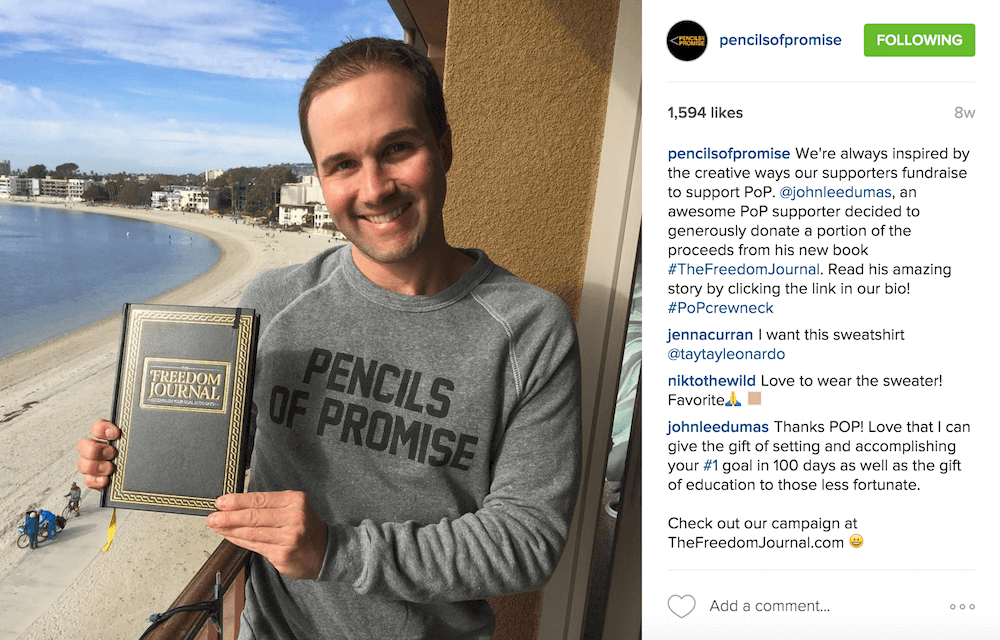
Social media posts, mentions in their newsletter and the overall support we’ve received from the Pencils of Promise team was so incredible, and we’re truly grateful to them for allowing us to help make an impact!
It’s important to note that Kickstarter does not allow you to raise funds for non-profits. We were very specific and clear in our communications that the funds being delivered to Pencils of Promise were a personal donation from John on behalf of Fire Nation.
5. Social Media & paid advertising
We can’t forget the power of social media.
For several months before and all throughout the 33 day Kickstarter campaign, we were running ads on both Facebook and YouTube that were giving direct calls to action to visit the Kickstarter campaign.
We also had regular posts set up and scheduled out so that we were consistently posting on every one of our social media channels almost daily.
Those channels included:
- YouTube
While Kickstarter doesn’t make it super easy to track individual sources and conversions from all incoming traffic, we are able to report that our ads on Facebook crushed it!
Here’s a look at a few of our top performing Facebook ads from the campaign:
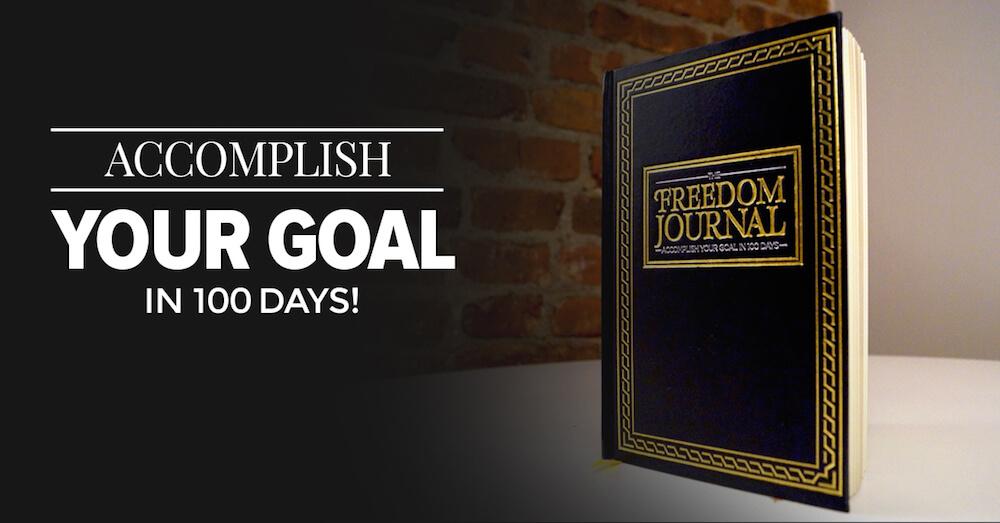
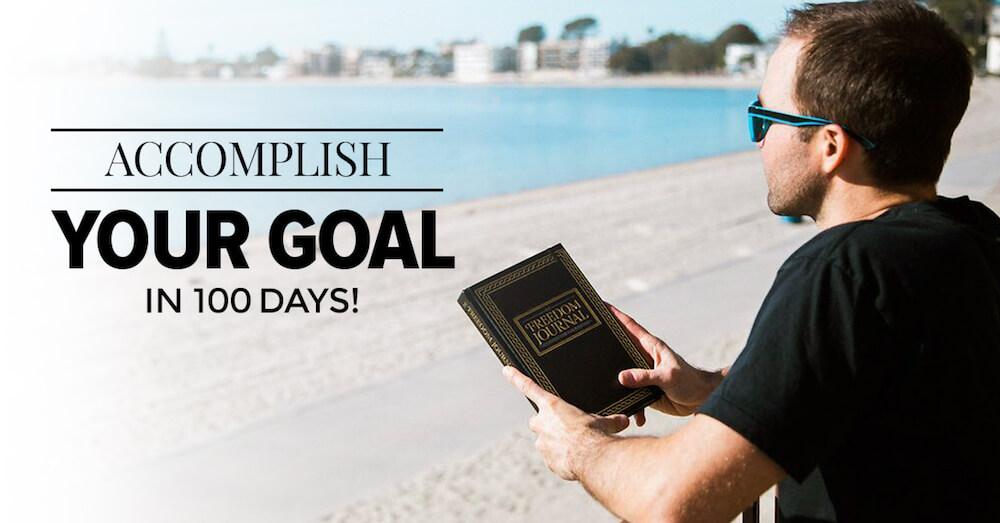
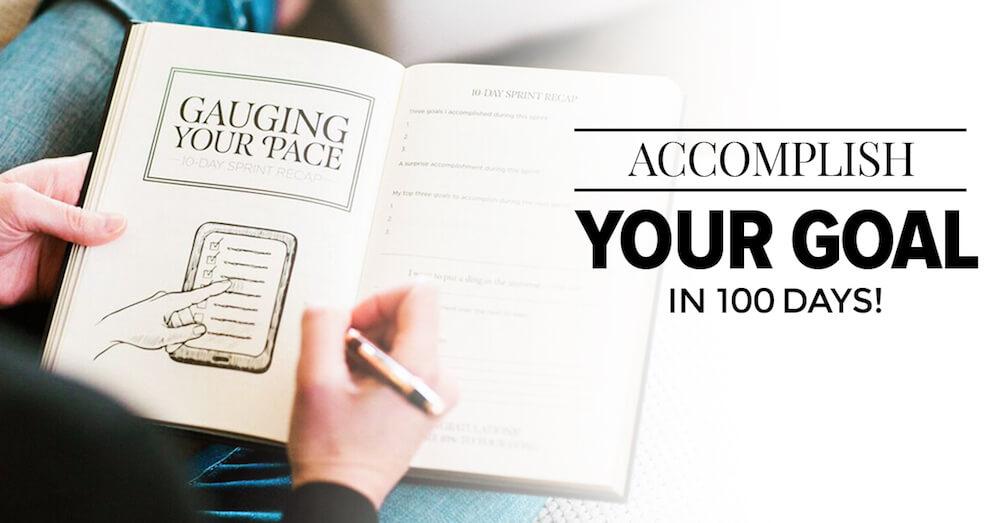
From Jan 6th to Jan 26th we ran ads every day on Facebook, which gave us a ROI (return on investment) of 490%, with our total ad spend being just $3,036, and the conversions from those ads adding up to funding in excess of $17,000 for the campaign!
Our YouTube ads also did well, but nothing compared to Facebook.
Our ROI with YouTube was 131%, with our total ad spend being $2,090, and the conversions from those ads adding up to $2,755 in funding.
Some cool insights / lessons from our specific YouTube ads campaign included:
- We had over 30,000 views;
- Ages 25-34 are most likely to convert;
- We didn’t target any cold traffic, which put a cap on how much we were able to spend.
Alright, now that you have a detailed look at all the work that went into prepping for our launch, including the 5 key marketing tactics we used, let’s take a look at what actually happened on January 4th!
Launch Day on Kickstarter: January 4, 2016
Okay, so what happened come launch day?!
Monday, Jan 4th marked the day The Freedom Journal launched on Kickstarter – the suspense was intense!
John woke up at 3:30am Pacific time to push “publish” on the campaign after months of our team working hard on a strategy we’d checked, and double checked, and triple checked.
When I left for the gym right about 7am, we had hit our funding goal of $25k, and John was already writing a personal check to Pencils of Promise to build our first school in a developing country on behalf of Fire Nation.
Photo credit: Kevin T Photography
January 4th was a day we’ll always remember.
Checking the page every 15 minutes, fielding amazing emails and posts on social media from our supporters – it’s hard to explain the feelings we were experiencing that day. In order to celebrate the launch with others – in person – we also threw a launch party!
That night we hosted The Freedom Journal Launch party here in San Diego, and the turnout was amazing!
Shout out to Paul F. Gero for being our photographer and helping us capture these incredible memories!
The launch party not only gave us an opportunity to celebrate The Freedom Journal campaign with our community here in San Diego, it also gave us the opportunity to provide a physical connection between some of our biggest fans and the journal itself.
This resulted in dozens of pledges and multiple up-pledges right then there at the launch party.
It’s definitely safe to say that launch day was super intense, but what was even more intense is the 33 days of hard work and focus that followed…
Once Jan 4th hit, and we knew The Freedom Journal campaign was going to be a success, our immediate focus turned towards keeping our momentum going strong.
Kickstarter is super helpful in this regard, because you can do some pretty cool things, like add new levels to your campaign, email just those who have pledged at a certain level with a note, and change the number of “spots” available at any given level.
Something you cannot do is make changes to an existing level once someone has made a pledge towards that level (unless it’s to change the # of spots available).
So John put on his walking shoes and took 10,000 steps every single day of those 33 days around Sail Bay, which resulted in some massive AH-HA moments in regards to how we could keep the momentum of the campaign going strong.
While the 33 day marketing strategy that I detailed out above certainly helped keep eyes and attention on the campaign the entire time, the up-pledge strategy was without a doubt what kept our pledges high and our momentum strong.
The “up-pledge” strategy
John came up with the idea to focus on specific “camps” of pledgers, meaning he wasn’t going to try and figure out how he could get every single backer to up their pledge to a higher level.
Instead, he focused on a single level, and did some due diligence to figure out why those people had pledged at that particular level instead of at a higher one.
He found out that backers were REALLY fired up by the idea that they could receive their Freedom Journal before anyone else. Soooo, what did John do?
He emailed every single backer who had pledged at the 1 or 2-pack level and he told them if they “up-pledged” in the next 24 hours to a 4-pack, he was going to send them a 5th copy of The Freedom Journal for FREE, today.
This strategy as a whole resulted in over 413 up-pledges!
That’s not all…
Throughout the campaign, we introduced a total of 4 new levels that didn’t exist when we first launched the campaign, bringing in an additional $33,000 in pledges.
Introducing these new levels was a result of a lot of brainstorming amongst our launch team, listening to our backers and supporters, and simply testing different things out.
Sometimes small tweaks can make a big difference.
On January 26th, we hit our second funding goal: $350k, and that day John wrote his 2nd $25k check to Pencils of Promise.
John used his up-pledge strategy throughout the campaign, and he continued to come up with new and unique ways to encourage those who had pledged at the lower levels to up their pledge based on an incredible bonus he was offering.
As the close of the Kickstarter campaign drew closer, we knew we had to figure out a way to finish strong.
We had initially talked about doing another party here in San Diego to celebrate the last few hours of the campaign, and to also take time to thank all those who contributed to its success.
But given this campaign had SUCH a wide reach – far beyond San Diego county – we decided to celebrate the final 3 hours of the campaign with the world via a live-streaming Blab.
Our Blab spanned the final 3 hours we were on Kickstarter: Feb 5, 2016 from 4pm – 7pm Pacific.
During the 3 hours John and I brought people in and out of the Blab session with us, chatted about the creation of The Freedom Journal, asked (and answered) a lot of great questions, and just had an overall great time!
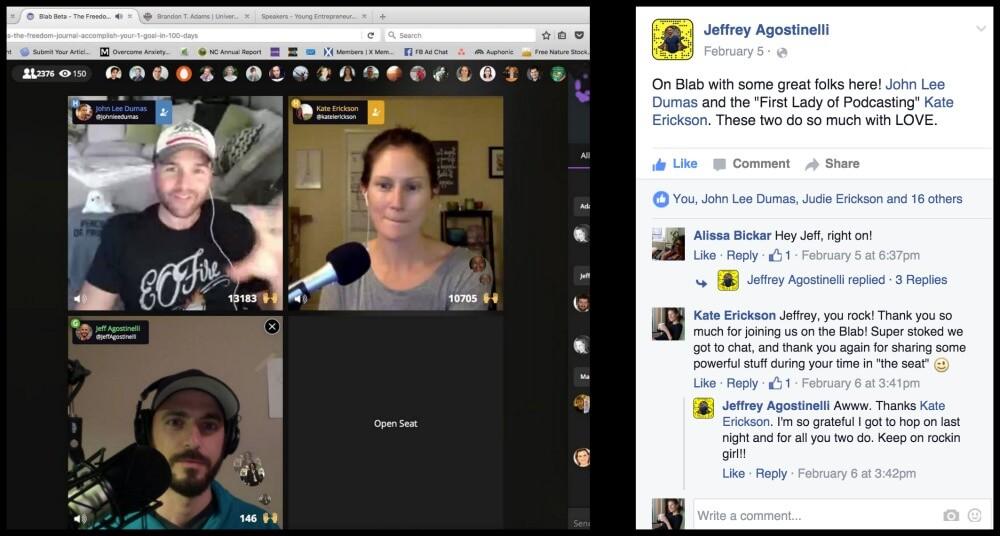
The result?
Multiple increased pledges and a lot of happy Freedom Lovers!
This was also a marketing play that Brandon called out when I asked him what he thought was different about our Kickstarter campaign than others he had seen.
Beyond the podcasting, the Live Blab was very effective in getting people to pledge, and even “up-pledge”.
Throughout the entire campaign we offered unique gifts to get current pledgers to up pledge and we did this very effectively.
Our “up pledge” strategy worked better then most campaigns and allowed us to raise more money all the way up to the end (instead of losing pledges towards the end like most campaigns do).
We kept the hype up until the end and made people excited to get more value out of their Freedom Journal experience.
Our 33 days on Kickstarter went far beyond what we ever could have prepared for or imagined, and that’s the beauty of it.
John could have spent weeks – even months – wondering what was going to happen or not happen, which tactics would be successful and which wouldn’t, and whether or not the results of the campaign were going to meet his expectations.
He could have set his goal to launch his first ever physical product, and then became overwhelmed by the several moving pieces it was going to take to accomplish it.
He could have continued thinking about the end product, never focusing on or realizing all the smaller steps that had to happen in order to help him get to the accomplishment of his goal.
He could have done all of these things.
But instead, John chose to believe in his idea.
He chose to believe the goal he had set would impact thousands, and eventually millions of people.
He chose determination and focus as the habits that would allow him to reach his goal, knowing that unless he was able to accomplish what he had set out to do, that impact would never be possible.
“Our beliefs are like unquestioned commands, telling us how things are, what’s possible and impossible and what we can and can not do. They shape every action, every thought and every feeling that we experience. As a result, changing our belief systems is central to making any real and lasting change in our lives.” ~ Anthony Robbins
Biggest Lessons Learned from The Freedom Journal Launch
1. Enjoy the journey
This was our first physical product ever, and the journey and overall experience of creating The Freedom Journal is something we’ll never forget.
So many rush through projects and robotically perform tasks just to “get to the end”, but when you enjoy the journey, you’re left with an experience you’ll remember forever.
When I asked John what the most impactful and rewarding moment of the campaign was for him, he shared this:
The excitement of the backers to be a part of something where they were giving themselves the gift of Freedom, and the gift of education to those less fortunate, was so awesome to see.
The domino effect of awesome that has started with every single backer getting The Freedom Journal in their hands – and that will continue because of the incredible partnership we’ve created with Pencils of Promise – I couldn’t ask for a bigger or better reward than those stories.
This got me thinking about how powerful this experience must have been for everyone involved in the launch.
In fact, one launch team member stood out in particular, Richie.
I had a hard time even imagining how powerful it must have been to actually be on the ground in China as The Freedom Journal was being created. He was the first person in the world to see and hold the physical journal – something that just months prior had been nothing but an idea in John’s mind.
Here’s what Richie told me about his experience:
Being in China, in the factory, watching the workers produce The Freedom Journal was thrilling!
It was incredible to see the amount of time, talent and attention they took in assembling each book.
It was awesome to see the whole process come full circle. I had the opportunity to be in John’s home when he was first talking about the idea. Then, I got to see him work through the manuscript drafts and eventually create the final PDF for printing.
Then, I got to work with the factory in China to find all the different materials for the book.
To see all those pieces come together in one place at the factory, and see those amazing workers put it all together, made me appreciate the journal (and all things manufactured) so much more.
It was an experience of a lifetime.
And I have no doubt there is a story of each and every one of our core team members experiencing this exact same moment: when they stopped and realize that this entire campaign and launch truly was an experience of a lifetime.
2. Your Kickstarter page design, video, and the story you tell make a huge impact on your campaign’s success
I’ve always heard this was true, and it makes total sense: if you can’t present what it is you’re trying to offer in an attractive and meaningful way so your viewer is compelled to take action after seeing your video and the rest of your Kickstarter page, then your campaign isn’t going to make it very far.
Here’s how Brandy made sure The Freedom Journal stood out amongst the thousands of other projects on Kickstarter:
While planning out the design for the campaign I did quite a bit of research as to what other similar Kickstarter campaigns were doing; I noticed that a lot of them looked the same (sans serif fonts, very clean/simple design elements, large photos, lots of white space).
I really wanted The Freedom Journal campaign to stand out in its own unique space, while still staying true to the brand image; so I decided to go in a much bolder direction by using lots of black, thick lines, and serif fonts.
Brandon also suggested that we use a variety of smaller photos throughout the page rather than the standard large photos, which was definitely a great call as it allowed us to show a wide variety of product features without taking up too much space.
I also wanted to hear from Brandon, our very own Kickstarter expert, what he felt was our “unique distinguisher” in terms of how we built and had the campaign page laid out.
Here’s what Brandon had to add:
The best way to engage an audience and get them attracted to a Kickstarter campaign is by telling a great story through the video and the campaign page.
In the months prior to launch, we put all the content together that told John’s story of how he built EOFire, and how setting and accomplishing goals has been vital to his success.
The Freedom Journal allowed John to reach those goals, and we wanted to demonstrate to others how they could do the same in their own endeavors.
Given John had proof that The Freedom Journal had worked for him, it allowed us to put together a great story for the campaign page.
Looking to launch your own idea on Kickstarter?
The 3 main points mentioned above might seem like simple check boxes:
- A great video that communicates the value of what it is you’re trying to sell;
- A page that’s laid out well and tells your visitor a story; and
- A killer design.
But it’s not as simple as setting up an account on Kickstarter, throwing together a page, and then launching your campaign all in a matter of a couple of days.
Let’s break each of these down.
1. The video
I already mentioned Caleb Wojcik, our videographer, who created our Kickstarter video for us.
The importance of this single element can make or break your campaign, because it is the video that sits up top on your page, and the first thing people will consume when they land there.
If you’re not able to communicate the direct benefits of your product, along with why the person watching should care, then there’s no reason for them to stick around to learn more.
Check out this behind-the-scenes clip from Caleb that he created specifically about his experience working on The Freedom Journal Kickstarter video, where he talks about why they included certain things, and what they did to get each shot just right.
2. The story, organization and flow
The best way to engage an audience and get them attracted to a Kickstarter campaign is by telling a great story through the video and the campaign page.
That’s how Brandon described the importance of the story you tell on your Kickstarter page, and true to form, John let nothing fall through the cracks when it came to telling a story.
For starters, we wanted to maximize the space we had.
In order to do this we used several smaller images instead of just one large image so we could present The Freedom Journal as a lifestyle versus just a journal.
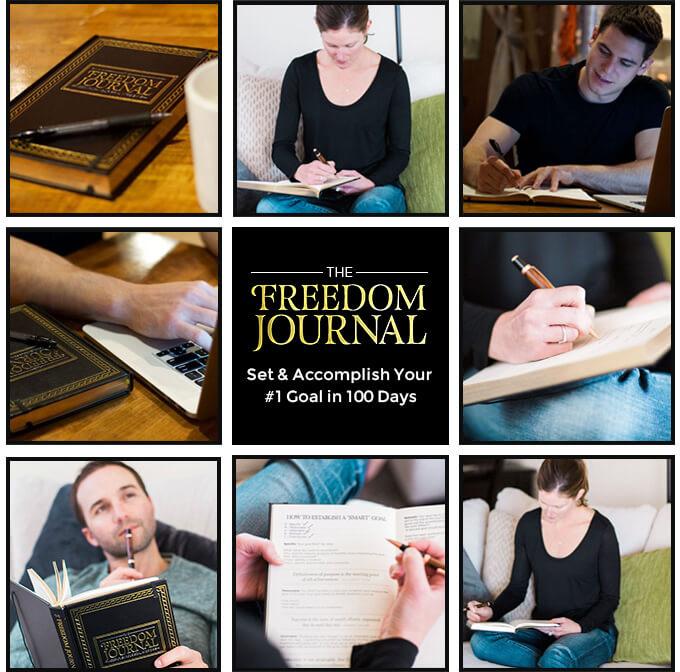
We also took special care in calling out each of the individual and unique features The Freedom Journal had to offer so visitors could actually see what the inside of the journal was like.
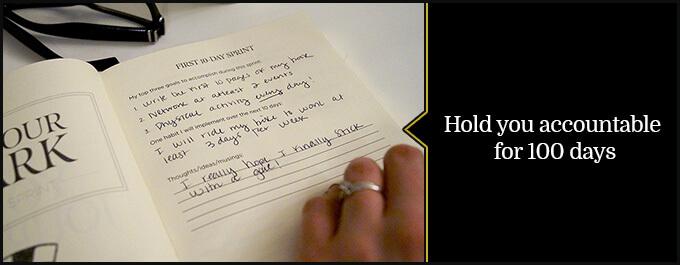
In addition, we made it a point to not just include our own input and rundown of The Freedom Journal – we also wanted to share what others thought about The Freedom Journal, too.
Now I’m not just talking about asking our family what they thought about The Freedom Journal and posting that up on the Kickstarter page…
Part of our story was sharing the power of setting and accomplishing goals, and in order to help us communicate that we asked other industry experts and successful entrepreneurs to talk about the role setting and accomplishing goals has played on their journey.
These turned into quite the testimonials for The Freedom Journal Kickstarter page.
And finally, by giving the page a solid structure and using bold headings for each section we able to make the page super user friendly.
These were the little things that allowed visitors to jump around the page without losing out on key info we wanted them to walk away with.



3. The design
Here are Brandy’s top tips for setting up your Kickstarter page design the right way…
1. Plan, plan, plan!
It may seem excessive and overdone, but mocking up the campaign design in Photoshop saved us TONS of time down the road.
It allowed me to see the areas that we needed to draw the eye to, as well as how to structure the information in an efficient, well organized flow so that it told a story (super important for keeping visitors interested/engaged).
2. Find 1 unique feature
When you find that 1 unique feature of the product, use it within the design elements.
For example, I decided to focus on the gold bookmark that comes attached to The Freedom Journal by creating section headers with a ribbon/bookmark shape.
Once I had that single, focused “look” down, it was much easier to come up with other cohesive design pieces.
3. Focus on structure and organization
This is something that a lot of campaigns lack, but that is absolutely necessary for keeping users interested in the campaign story.
Instead of displaying the information in large, wordy paragraphs, organize it into individual sections (product features, about the author, etc..), and create corresponding header graphics to emphasize separation.
Think of it like a website landing page: users should be able to quickly browse through the information and understand the core focus areas without having to read each paragraph or description.
4. There’s no guarantee you’ll get featured by Kickstarter
While it wasn’t an expectation or something we thought would “definitely happen” for us, we did know from Brandon there was high potential we’d get featured by Kickstarter if our campaign launched strong.
Once we hit our funding goal of $25 in less than 3 hours, we thought the trajectory of our campaign couldn’t be stopped!
While our trajectory and the consistency we maintained throughout our entire campaign was incredible, we were never featured by Kickstarter in one of their featured projects or project newsletters.
Here’s what Brandon had to say when I asked him what were some things we could have done differently…
To be completely honest, there weren’t many things that we did wrong for this campaign.
I feel like we should’ve raised over $600,000 though, and what made it difficult for us to achieve that was the fact that we never got featured by Kickstarter.
If we would’ve been featured by Kickstarter and sent out to their email list, I know we would’ve broken the book launch record set by Eric Ries.
The key factors in getting featured by Kickstarter are getting a lot of excitement and hype at the beginning by having:
- a large amount of pledged money,
- a large number of backers,
- a lot of media attention, and also
- showing a community being created.
We did all of those things – and even raised over $100,000 in the first 33 hours.
Why we didn’t get featured still boggles my mind, but what we did without getting featured is amazing.
5. Not every idea will work
There were definitely ideas we had for The Freedom Journal campaign that were major flops – meaning they didn’t move the needle at all.
Looking back, these things were ideas that at least one person on our core team voiced concern about in terms of whether or not they’d actually make an impact.
But sometimes you just have to try in order to know for sure what’s going to work.
Two things we tried that did not move the needle for us at all were:
- A Thunderclap campaign, which we ended up scrapping a few days into it in order to focus on getting email commitments instead;
- A Survey sales funnel, which we also scrapped within about a week of launching to focus on the existing marketing channels we were already using.
Even though these ideas didn’t work out, it wasn’t a huge deal (although we did invest quite a bit of time and bandwidth into the survey idea).
The important part is that we were keeping a close enough eye on our stats and what WAS working to know pretty quickly it was time to scrap these ideas before they took up too much of our bandwidth.
6. Building relationships of trust and value is powerful
When I asked John what he thought was the most powerful part of the entire campaign, he said:
It’s the relationship of trust and value that has been created as a result of me producing over 1,200 EOFire episodes – and not just the relationship of trust and value with Fire Nation, but with every single guest who has come on the show.
It’s not the first or the last time you’ll hear us talk about the importance of building relationships as an entrepreneur.
“You can have everything in life you want, if you will just help enough other people get what they want.” ~ Zig Ziglar
7. We missed – a lot
You know the feeling you get when you’re about to try something new?… The one that has you in the weeds a little bit – wondering, guessing, and obsessing over what might be missing, or what you should be doing differently before you introduce this new thing to the world?
Luckily, John wouldn’t let that happen, and we talk often here at EOFire about just putting things out there.
It is only AFTER you take action and share something with your audience that the most important feedback you’ll ever receive will come.
There are a lot of things we tweaked, changed and “sent back” in the process of creating The Freedom Journal, but we still have an entire spreadsheet filled with commonly asked questions, requests and recommendations from those who are using The Freedom Journal right now.
Straight up, these are things we kind of dropped the ball on:
- Where is the big space in the beginning of the journal where I actually get to write my SMART goal down?
- I would LOVE to have a holder to put my pen in.
- The downloadable PDF doesn’t let me hit “return” in the bigger spaces, and so I can’t start filling it out or save it.
Are we sorry we missed these things? Sure, it’d be amazing to know EVERYTHING; but you simply can’t know everything.
Of all the testing and prototypes and reviews and edits, none of these things were ever mentioned, and frankly, it’s not the end of the world.
Now we know exactly what to improve for The Freedom Journal 2.0!
8. Celebrate the wins along the way
We had some huge wins throughout our campaign, and sometimes it’s easy to get wrapped up in everything else that’s going on and “forget” to take a time out to celebrate.
This time out is so integral, because it helps you build momentum, and it also helps you recognize and acknowledge what’s working really well for you.
When I chatted with Brandon, he told me in his mind, these were some of our biggest wins:
After spending months on the campaign and finally seeing it submitted and verified for launch by Kickstarter was a big relief and success in my mind. We had literally put in hundreds of hours to the campaign, and we had finally had it complete. That was our first big win in my mind.
The next big win was when we hit $100,000 in just 33 hours. I remember looking at the campaign in awe; it was a surreal moment to see so much success in such a short period of time. At that point I knew we had created something that was going to go down in history as one of the most successful book launches ever created on Kickstarter.
Finally, the amount of attraction we got from the crowd and media was amazing in the first week. I believe the launch party was a huge success on day 1; creating a lot of hype at the beginning is vital and I believe we mastered that. I personally promoted book on LIVE TV within the first hours of campaign and we had dozens of podcast shows air that day promoting The Freedom Journal, all of which came together to help us make a huge splash.
Ok, let’s be real: we had more than a couple of happy dances here in our living room, at our launch party, and throughout the 33 day Kickstarter campaign!
But what’s so awesome for us now, post-Kickstarter – and the reason why John created The Freedom Journal in the first place – are the wins others are experiencing. Wins that are literally bringing these individuals one step closer to freedom.
These wins are being shared every single day when we jump into the Facebook group by the thousands who are on their 100 day journey to accomplishing their #1 goal:
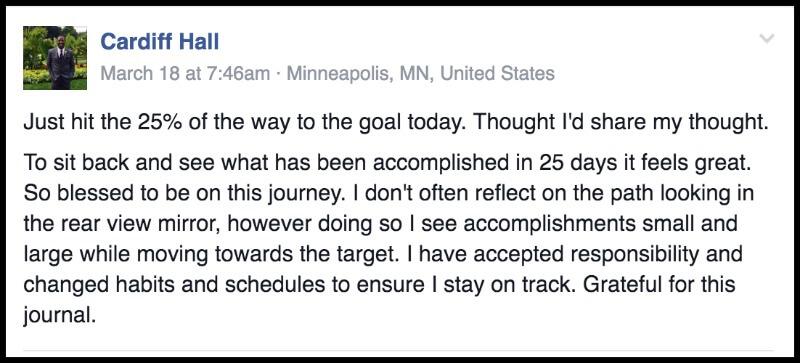
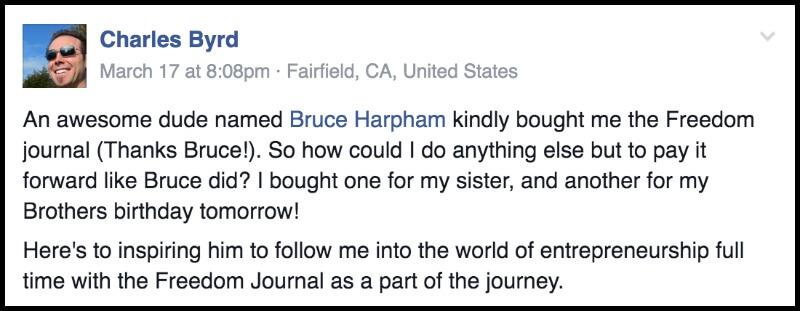
9. There is A LOT involved with selling a physical product
Remember when I talked earlier about how we didn’t have ALL the answers, or have everything perfectly planned out and prepped?
This extended well beyond the Kickstarter campaign, too…
Things like figuring out:
- How to set up your Amazon seller account;
- What facilities your product will be shipping from;
- How to include sales tax for states that require it;
- What the benefits of having a Shopify store, in addition to Amazon, are;
- and the list goes on…
These aren’t things we knew about in advance.
These are all things that came up in the process of creating and launching The Freedom Journal, and things that John had to sit down and research in order to figure it out.
For more info on setting up your Amazon seller account, you can click here. Because of the multiple options and various ways you might go about setting up your seller account, and due to the many gray areas when it comes to sales tax and the different laws in place for difference countries, we won’t be getting into that here.
Note that these are things you should be aware of and looking into if you’re going to be selling physical products online. Hiring a CPA and / or speaking with an attorney might be beneficial in helping you navigate these waters.
The final numbers
Our Kickstarter campaign at a glance:
- 6th most funded publishing campaign of all time;
- Over $453k pledged;
- More than 7,000 backers;
- 2 Schools funded through Pencils of Promise;
- 1 year in the making;
- Over 10 people were direct contributors in making the campaign happen;
- Less than 1.5% of all charges failed and were not recovered;
- We were able to start the fulfillment process within just 1 week of the campaign ending!
The Freedom Journal campaign was a new experience for us.
Every step, every interaction, every event and the unique marketing strategies we employed were almost all completely new to us, proving that it doesn’t matter whether or not you can “see it all clearly”. What matters is that you’re disciplined and focused.
What matters is that you’re willing to put a plan in place, and take action – every single day – towards executing that plan in order to accomplish your goal.
We’ve seen and heard from thousands in our Freedom Journal private Facebook group, and the feedback has been incredible!
All the determination and focus John put into creating and launching The Freedom Journal is now paying off in the form of the ripple effect.
What started out as an idea – a goal that John shared with me in January 2015 – became reality in January 2016: helping individuals around the world create Freedom in their lives through setting and accomplishing their biggest goals.
Always remember, YOU get to choose.
Setting and accomplishing your biggest goals starts today
If you have an idea, and you think Kickstarter might be the right platform for you to launch that idea to the world, then we hope the tips and tactics we shared in this post will be helpful for you.
If you have an idea, and you’re not quite sure what the right platform for you to launch that idea to the world might be, then the first step is to turn your idea into a SMART goal.
Once you have a SMART goal, you can start putting a plan in place to execute.
Once you have a plan in place to execute, you can start taking purposeful action and scheduling check points and reviews along the way to help ensure you’re staying on the right track.
And just in case you hit a point of overwhelm, here are some tips on how to manage that overwhelm. :)
Choose Freedom
If you’re ready to take control and choose freedom in your life, then accomplishing your #1 is only 100 days away with The Freedom Journal.
